Photos:: Portraits of Cuba
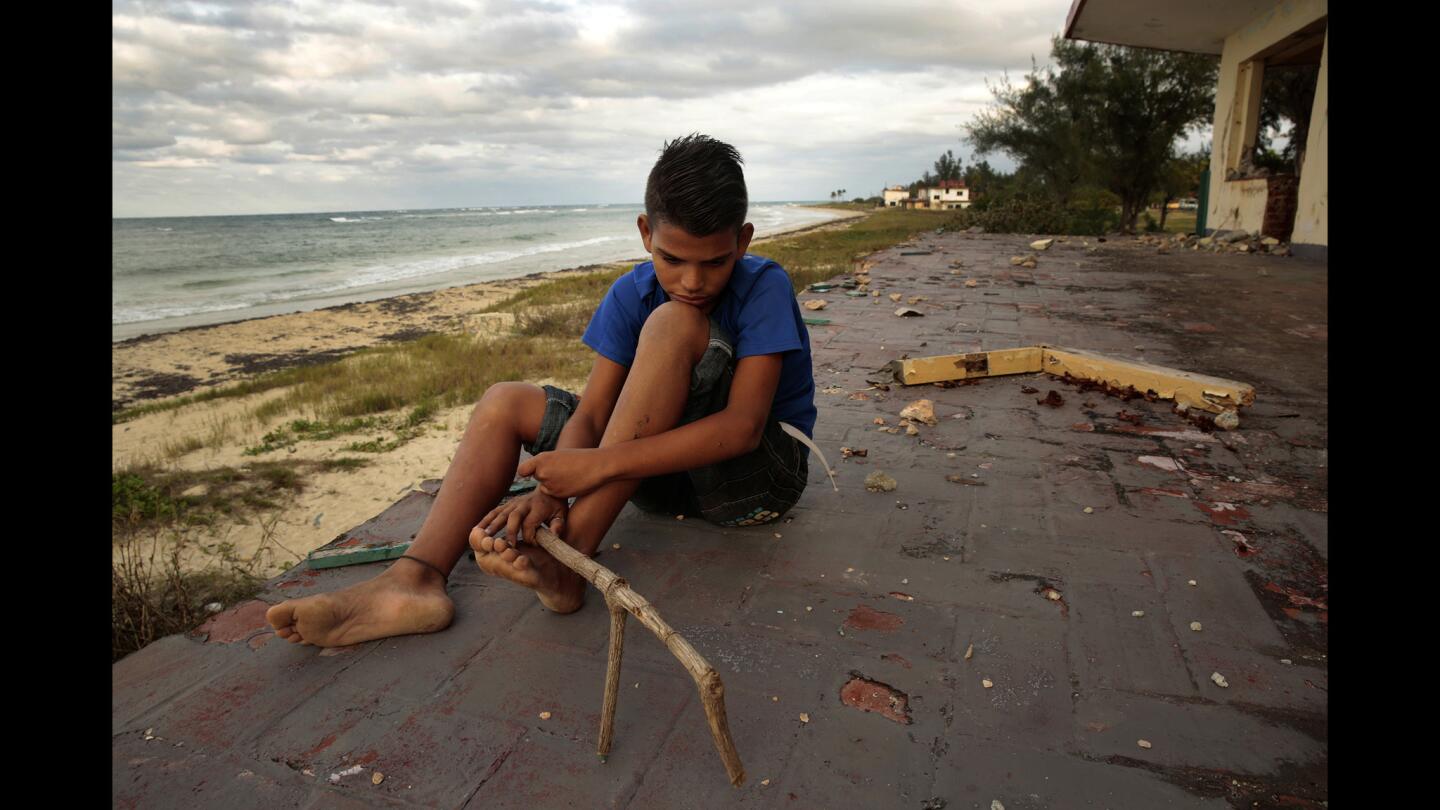
Alejandro Tellez, 14, sits near an abandoned home once owned by Americans, according to locals from the town of Guanabo, Cuba. Despite their location on the north shore of Cuba, the homes have remained vacant since the Cuban Revolution in the 1950s. (Carolyn Cole / Los Angeles Times)
Los Angeles Times photographer Carolyn Cole spent several days in Cuba after President Obama announced plans to normalize relations between the United States and the island nation and captured these images.
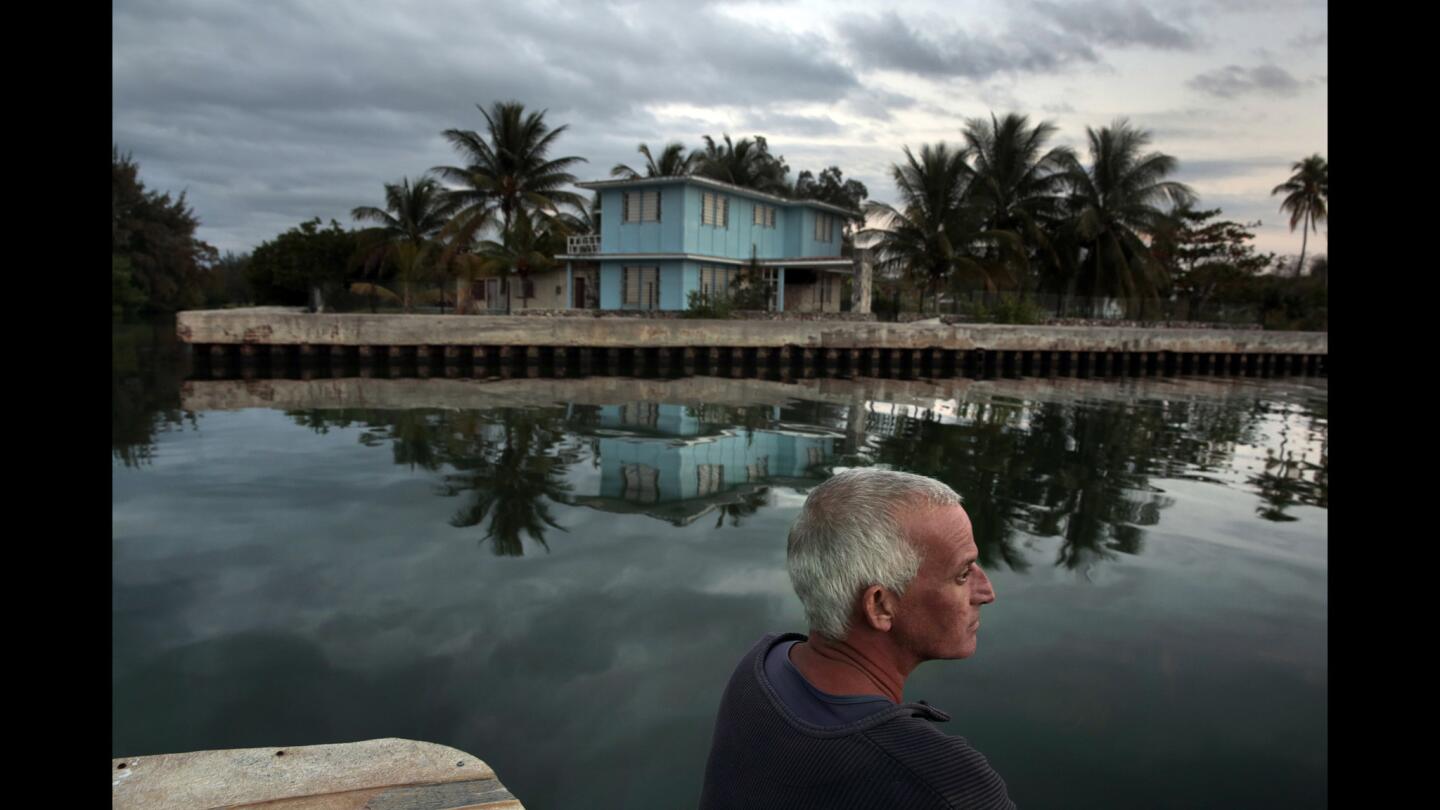
A fisherman passes along a canal on his boat in Guanabo, Cuba. According to locals, many of the homes in the area were once owned by Americans, but they have remained vacant since the time of the Cuban Revolution in the 1950s. (Carolyn Cole / Los Angeles Times)
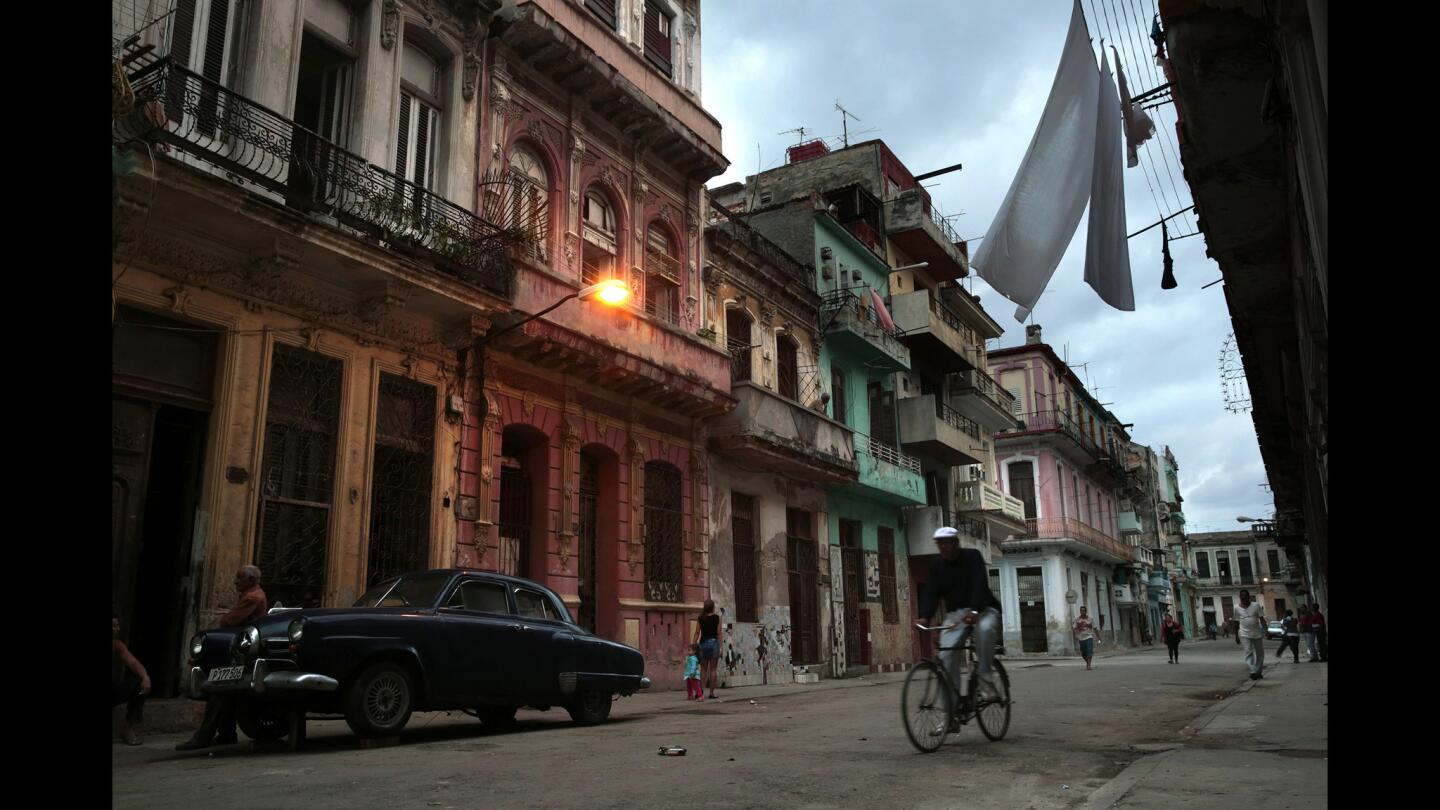
Parts of Old Havana are being restored for foreign tourists, but others areas remain the same. (Carolyn Cole / Los Angeles Times)
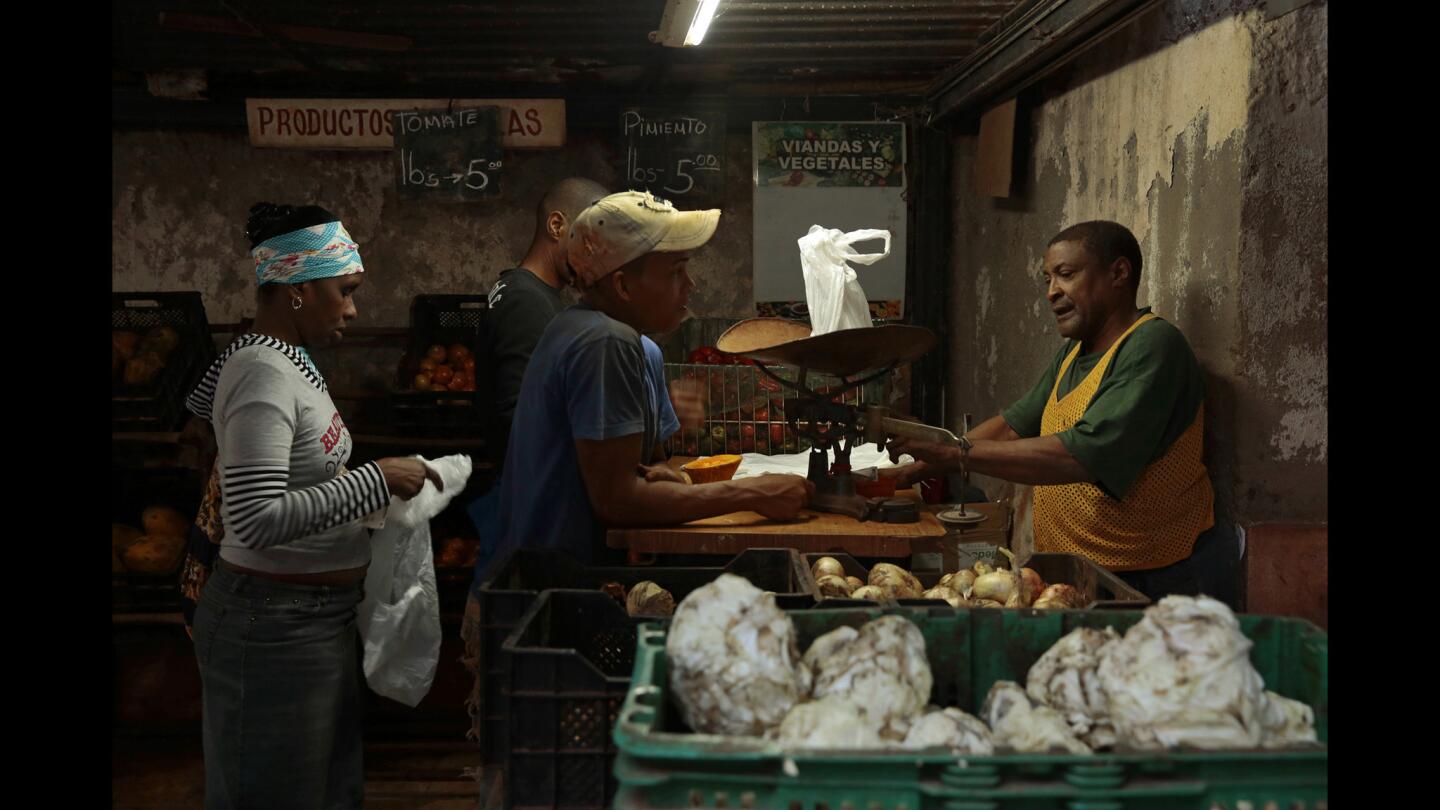
Government food rations in Cuba are meager and do not cover fruit and vegetables. The costs are regulated by the government and haven’t changed much in many years. (Carolyn Cole / Los Angeles Times)
Advertisement
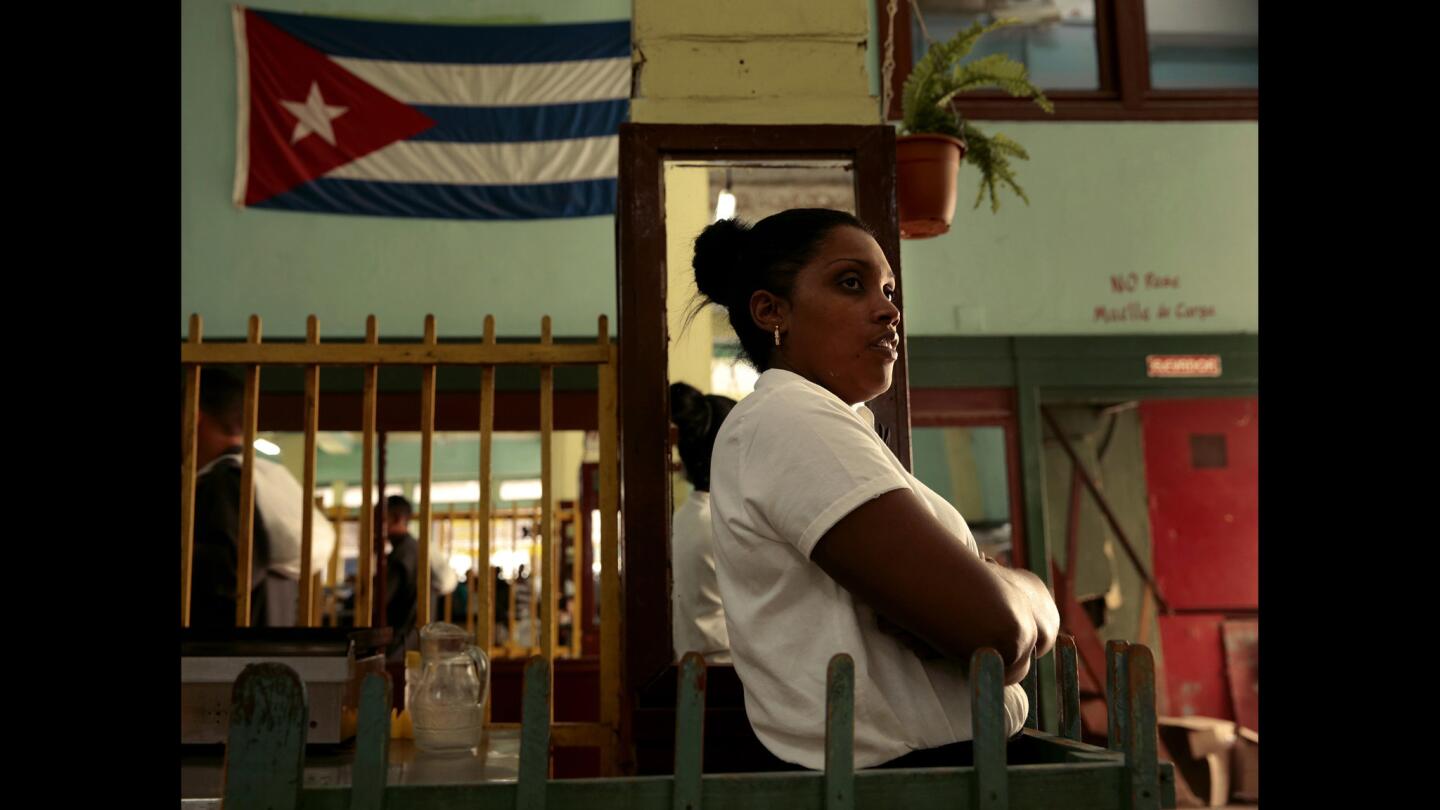
At a restaurant in Old Havana, Cuba, a worker waits for customers to start arriving. Although the restaurant is mainly for locals, some tourists do wander in. (Carolyn Cole / Los Angeles Times)
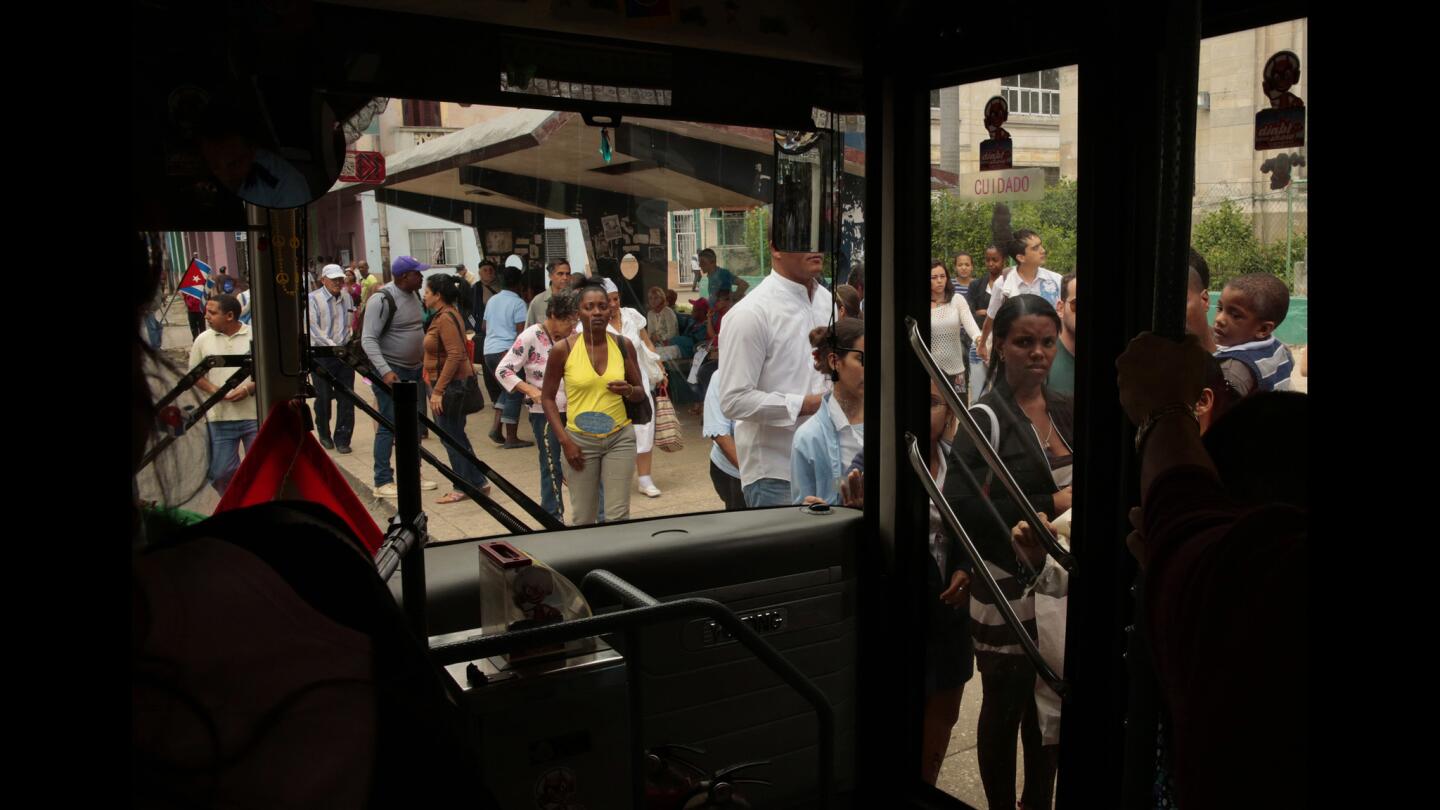
Most Cubans can’t afford to buy a car or the expenses that go with it. In Havana, buses are crowded and lines are long, especially during rush hours. (Carolyn Cole / Los Angeles Times)
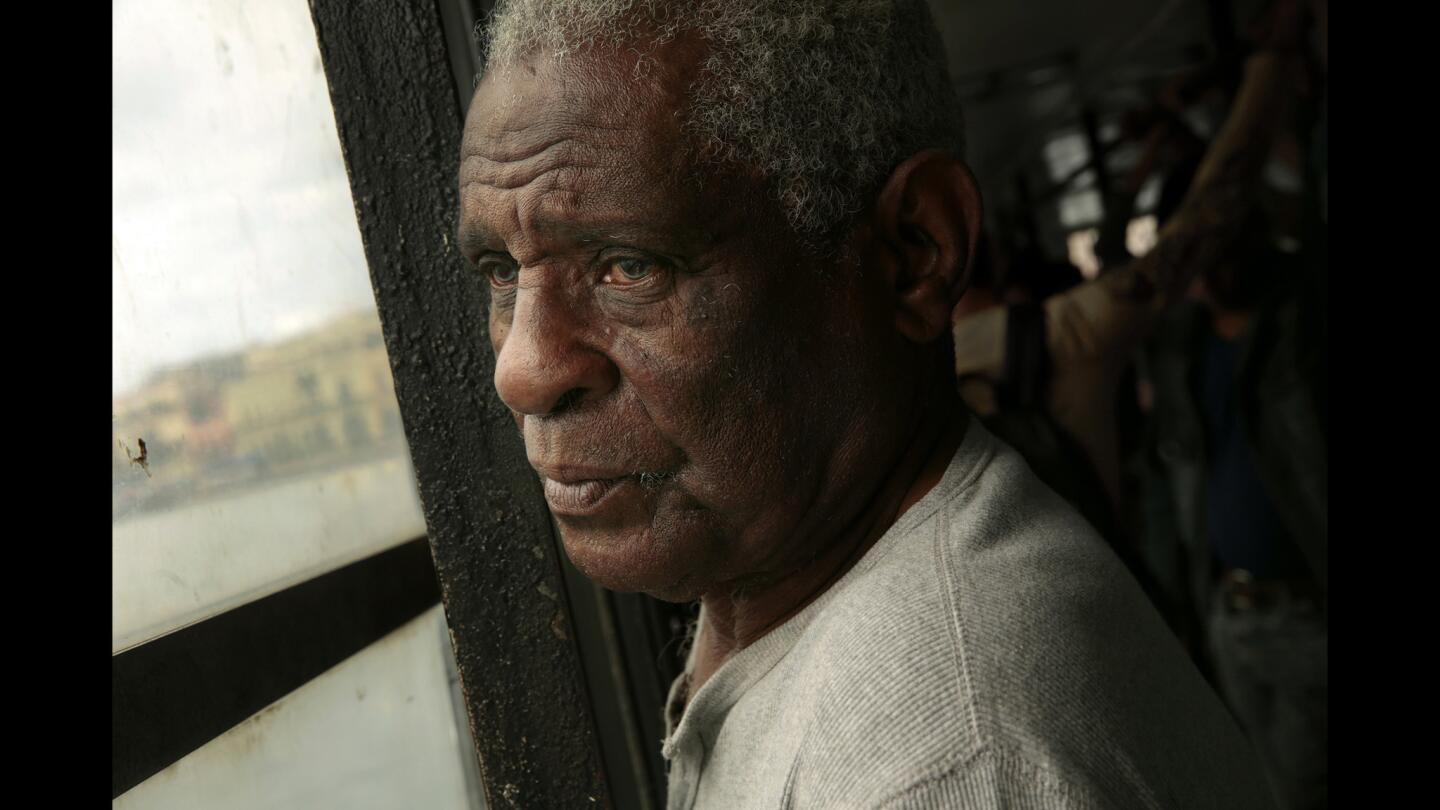
Luis Torriente, 79, repairs cars for a living, but doesn’t own one himself. He can’t afford to. He used to have a Pontiac, but sold it many years ago. He now rides the ferry to and from Old Havana. (Carolyn Cole / Los Angeles Times)
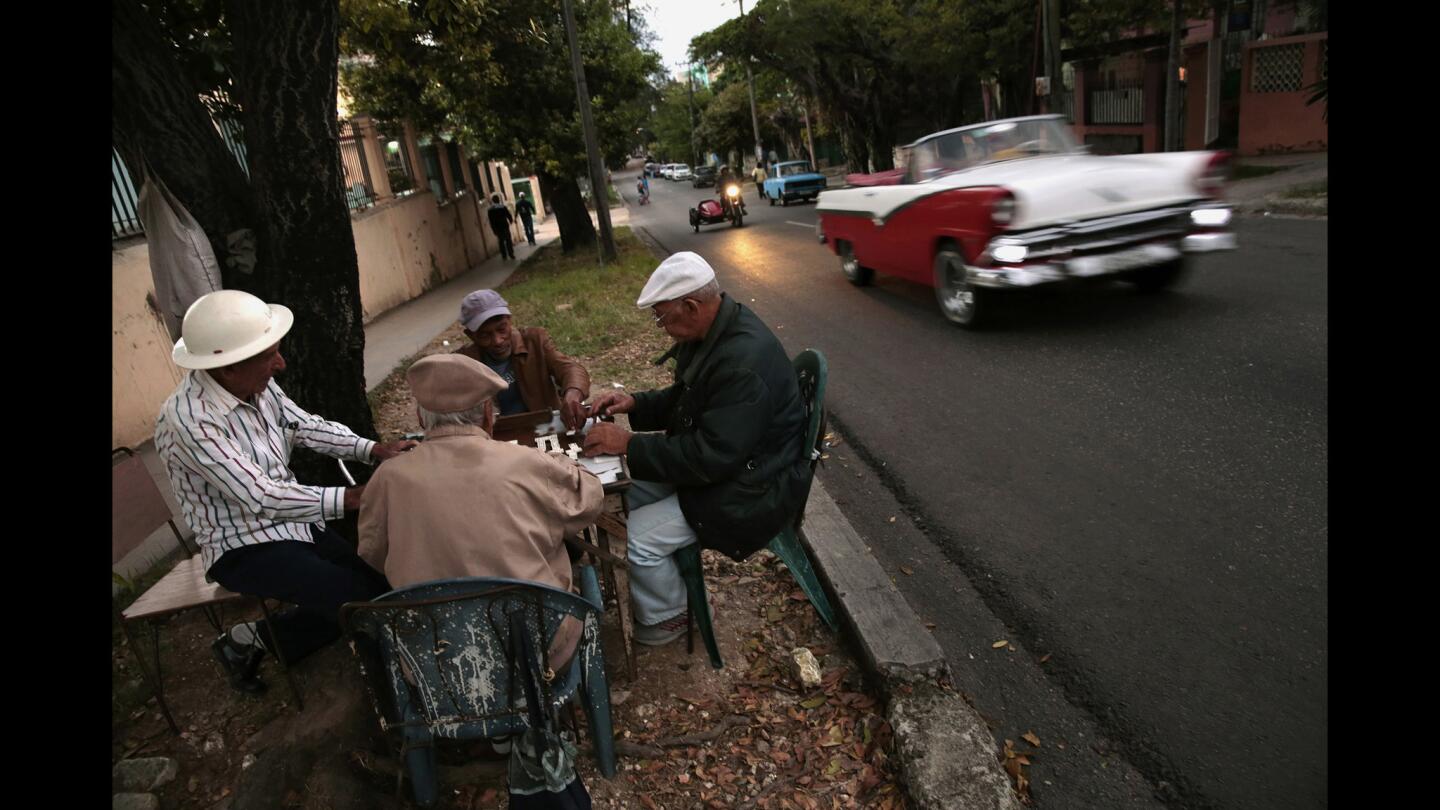
Men play a game of dominoes on the side of the road in Havana. More than 50 years after the Cuban Revolution ended, some things have changed in the country, but due to the U.S. embargo, much remains the same. (Carolyn Cole / Los Angeles Times)
Advertisement
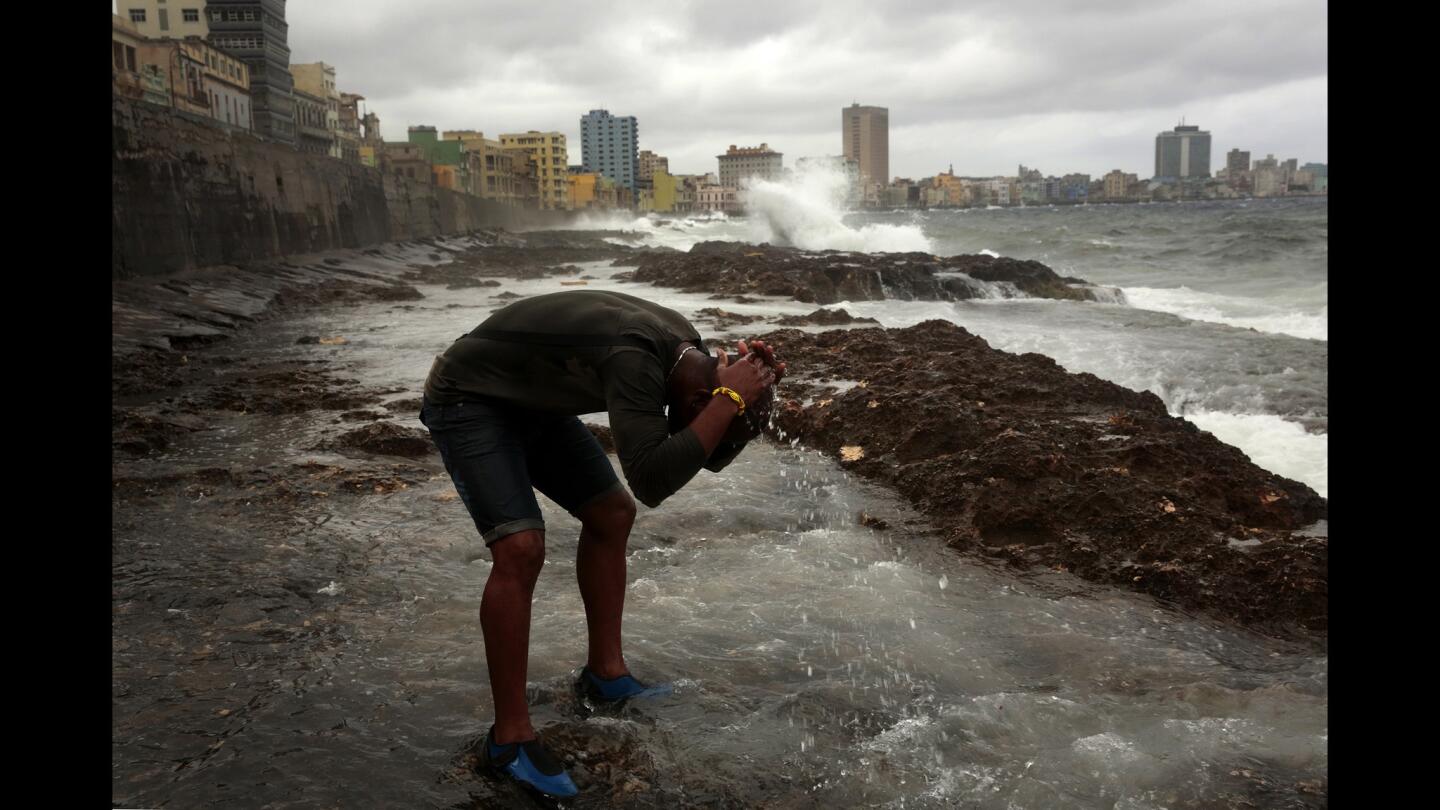
Leonardo Castillo practices Santeria and comes to the waterfront in Havana to take part in a spiritual water ritual. In the evenings, he works as a dancer. (Carolyn Cole / Los Angeles Times)
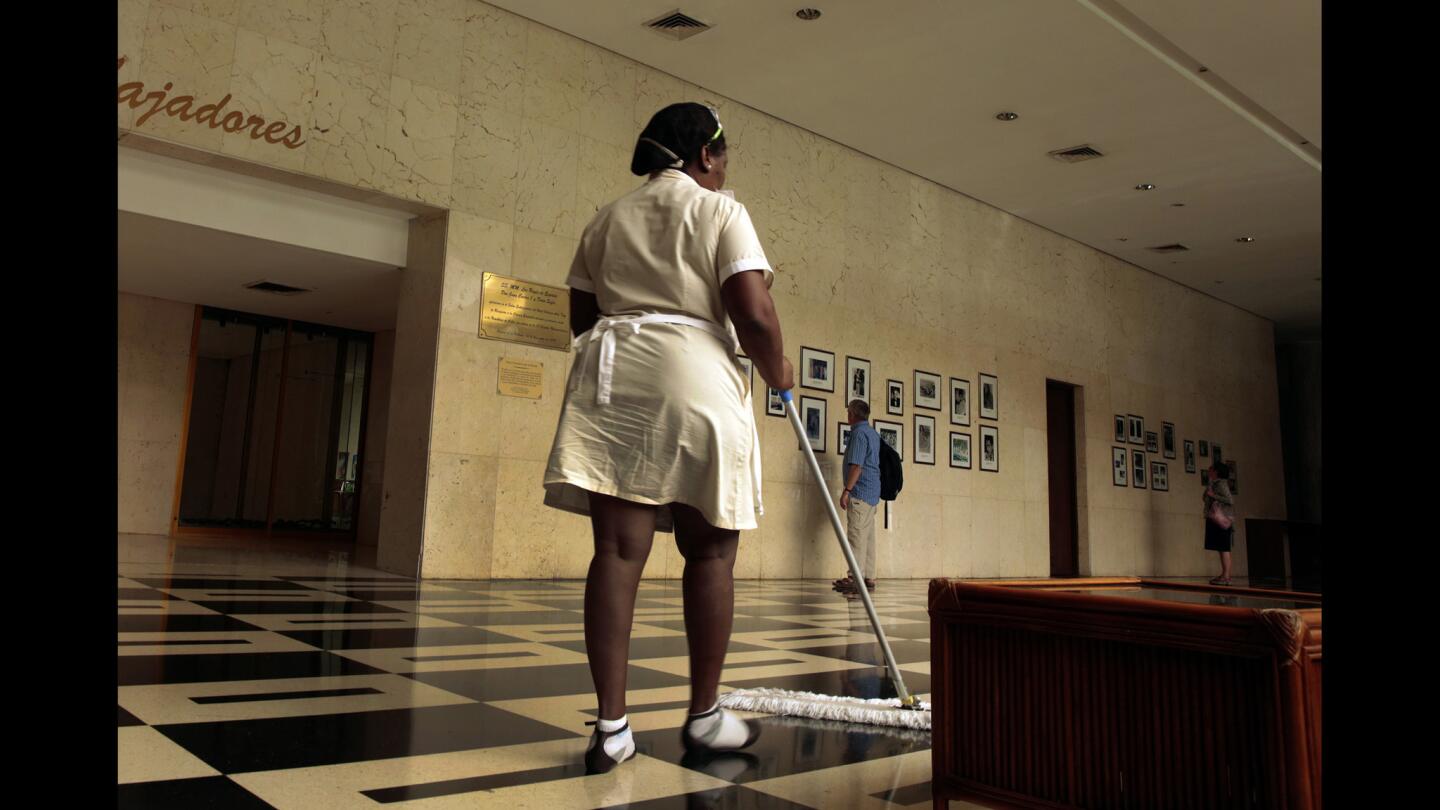
A woman mops the floors of the Hotel Habana Libre, one of the oldest and most expensive hotels in Havana. Although the salaries of most hotel workers haven’t changed in years, earning tips is an incentive. (Carolyn Cole / Los Angeles Times)
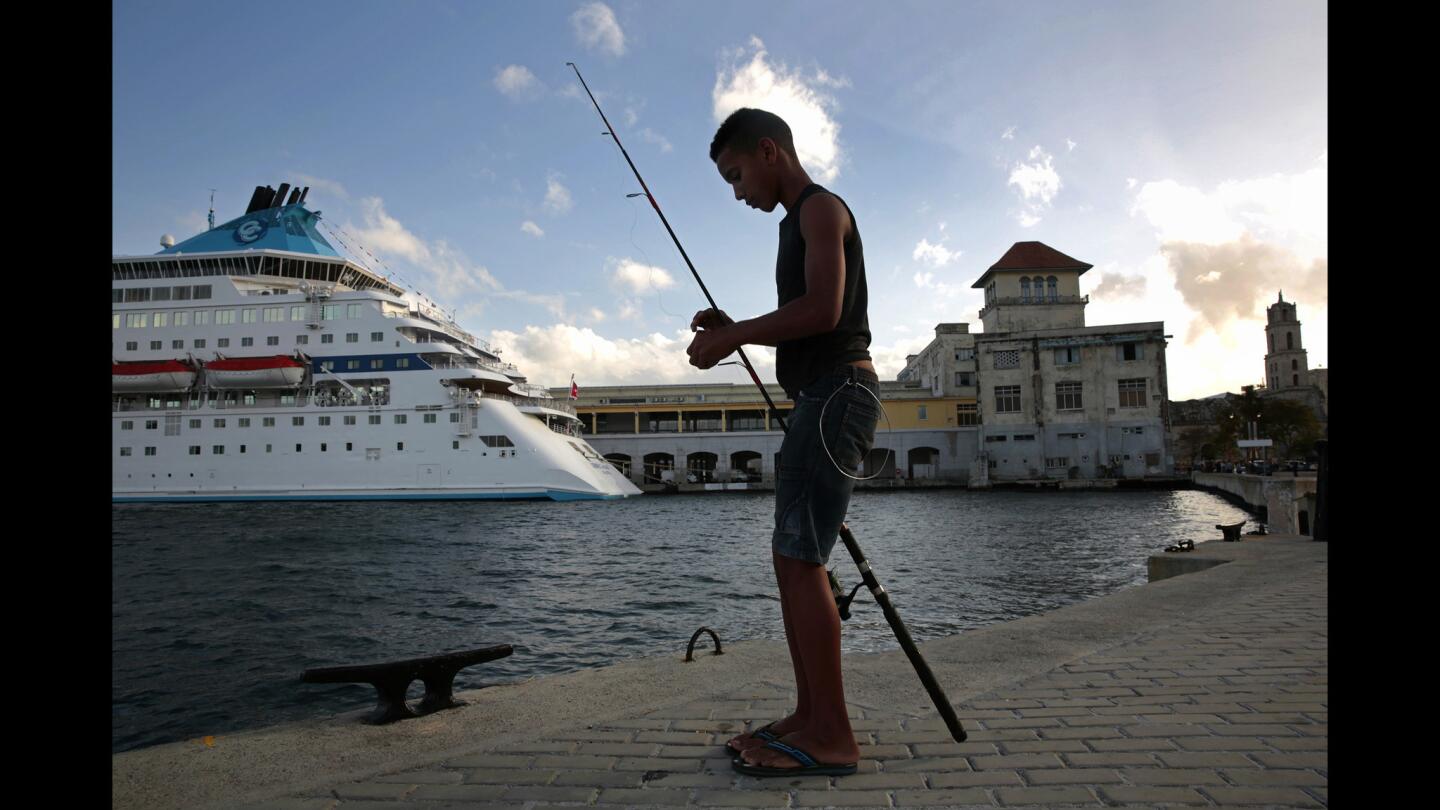
Cruise ships started arriving in Havana less than two years ago, but with the change in relations with the United States and easing restrictions, there will likely be an increase in tourism in the years to come. (Carolyn Cole / Los Angeles Times)
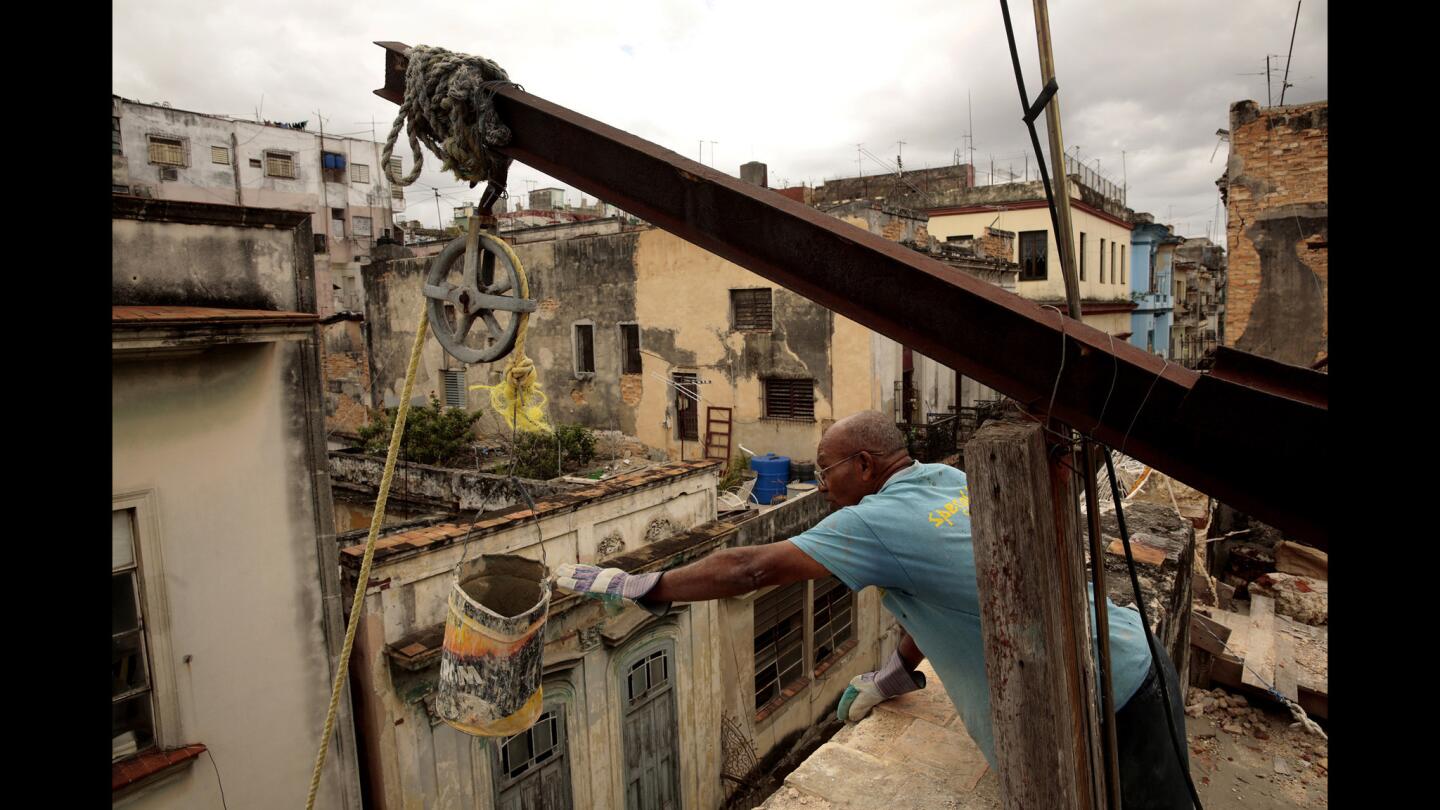
Cement is hoisted to the roof of a building using a makeshift pulley system. The Cuban government is paying to renovate homes in Old Havana for families who can’t afford to do so on their own. Old Havana is a major tourist attraction in Cuba, and the area is being updated building by building. (Carolyn Cole / Los Angeles Times)
Advertisement
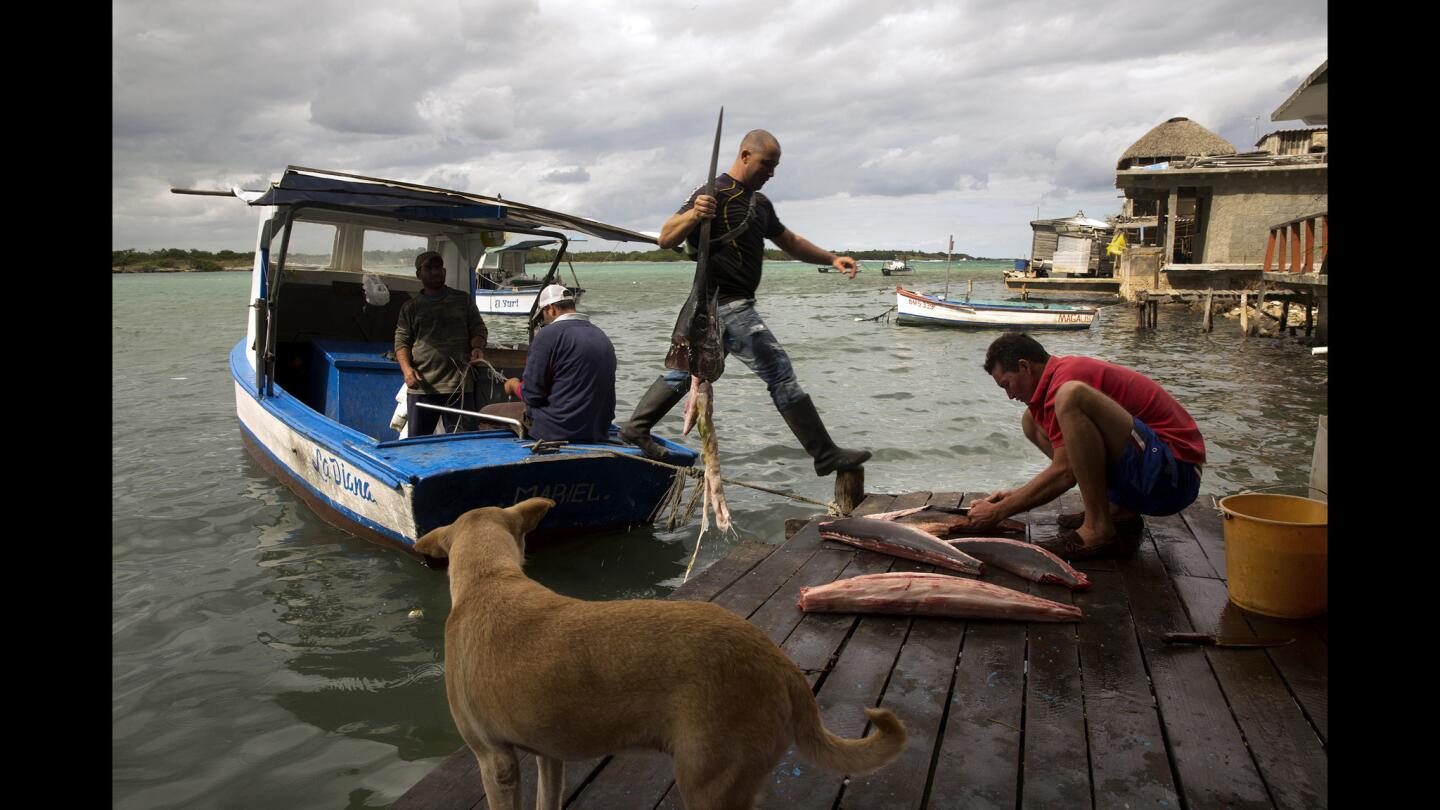
Yuniel Alonzo, 30, owns a fishing boat in Bienvenido Cruz, Cuba. Fishing boats are tightly controlled in the country, where 50% of the fishermen’s catch goes to the government. Many fish are banned due to overfishing. (Carolyn Cole / Los Angeles Times)
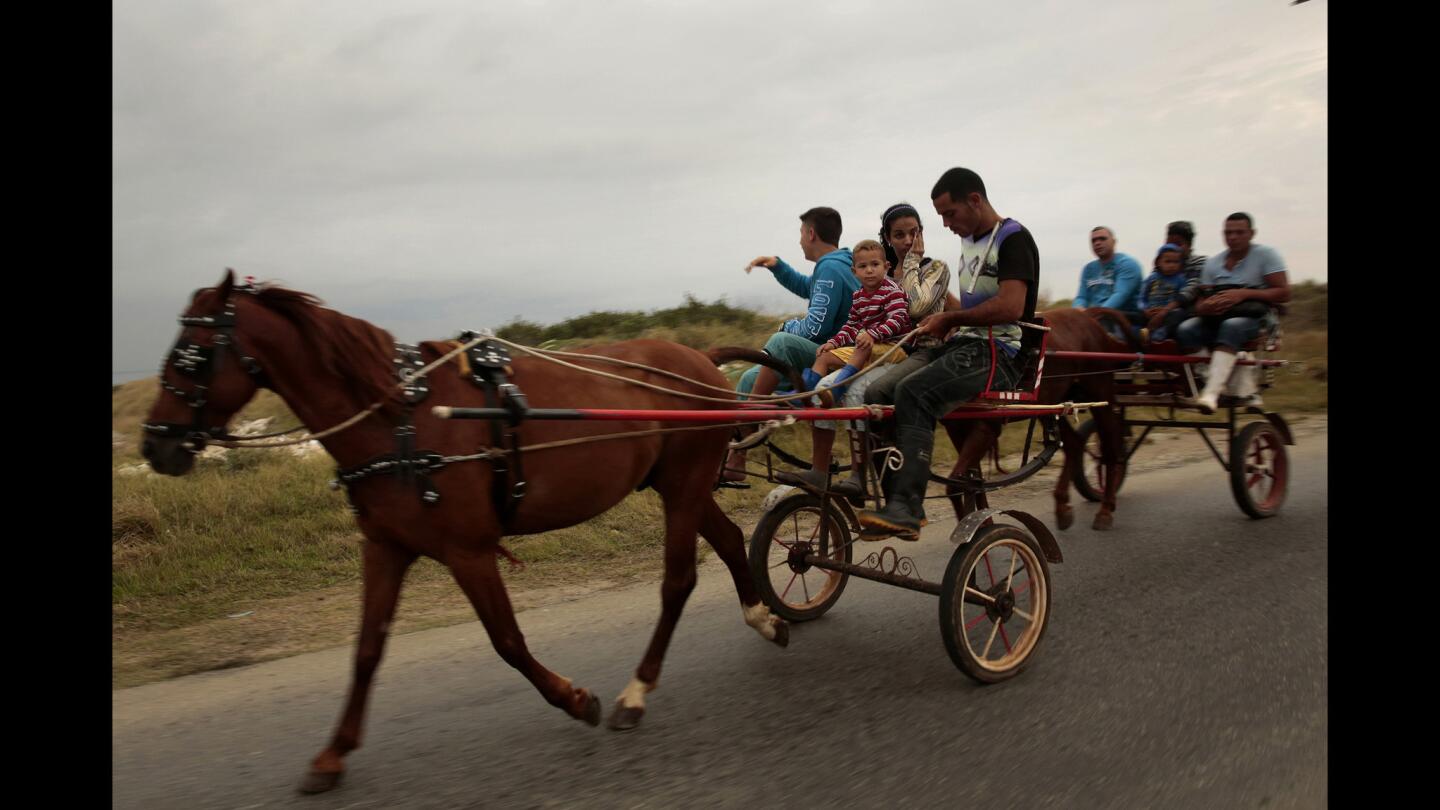
More than 50 years after the Cuban Revolution, some things have changed in Cuba, but with the U.S. embargo, much remains the same. Many Cuban families can’t afford cars, which are very expensive, so they continue to use horse buggies. (Carolyn Cole / Los Angeles Times)
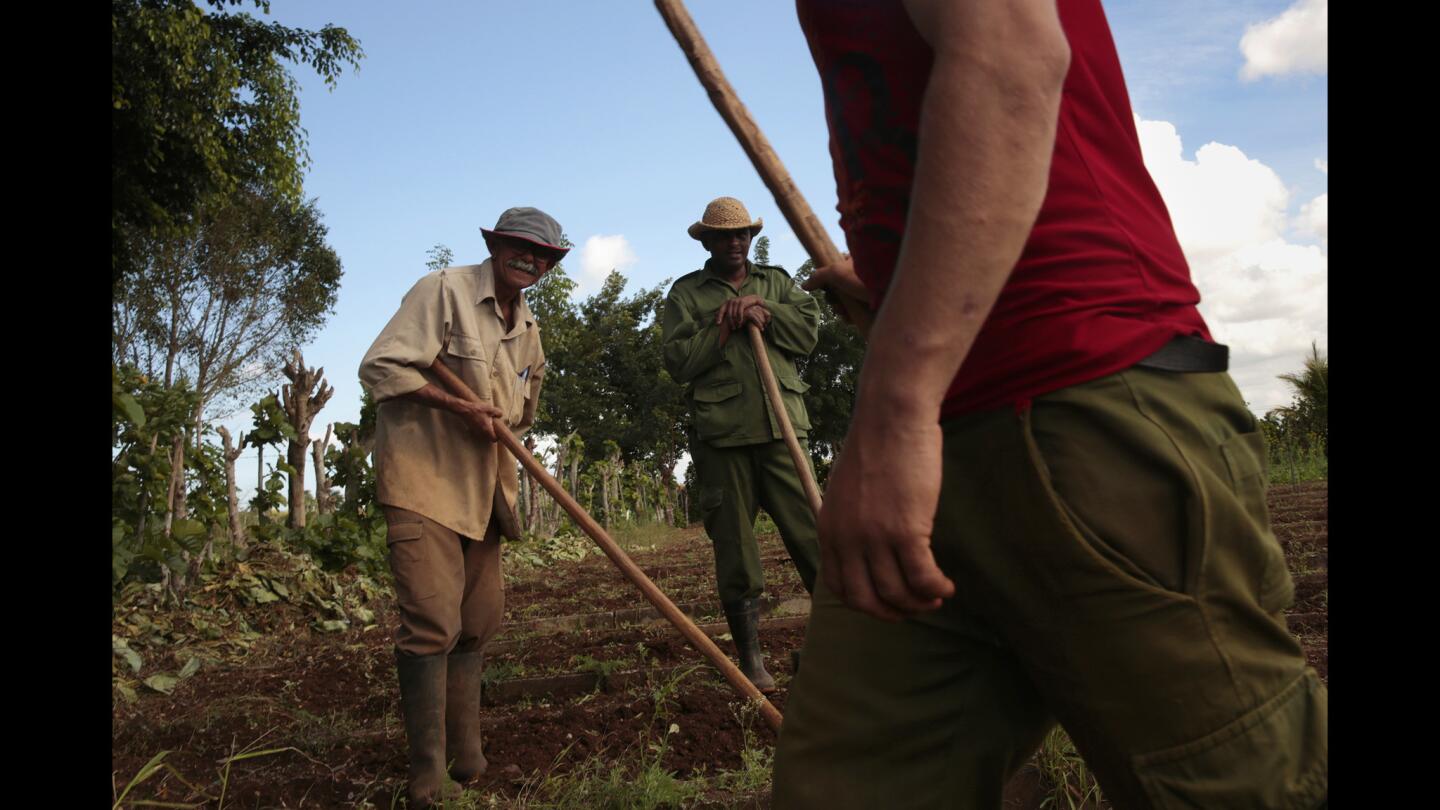
Brawleo Lopez, 71, and Enrique Miranda, 50, center, continue to work on a farm cooperative. Neither has a pension. Lopez hopes to retire in five years, but he can’t afford to yet. (Carolyn Cole / Los Angeles Times)
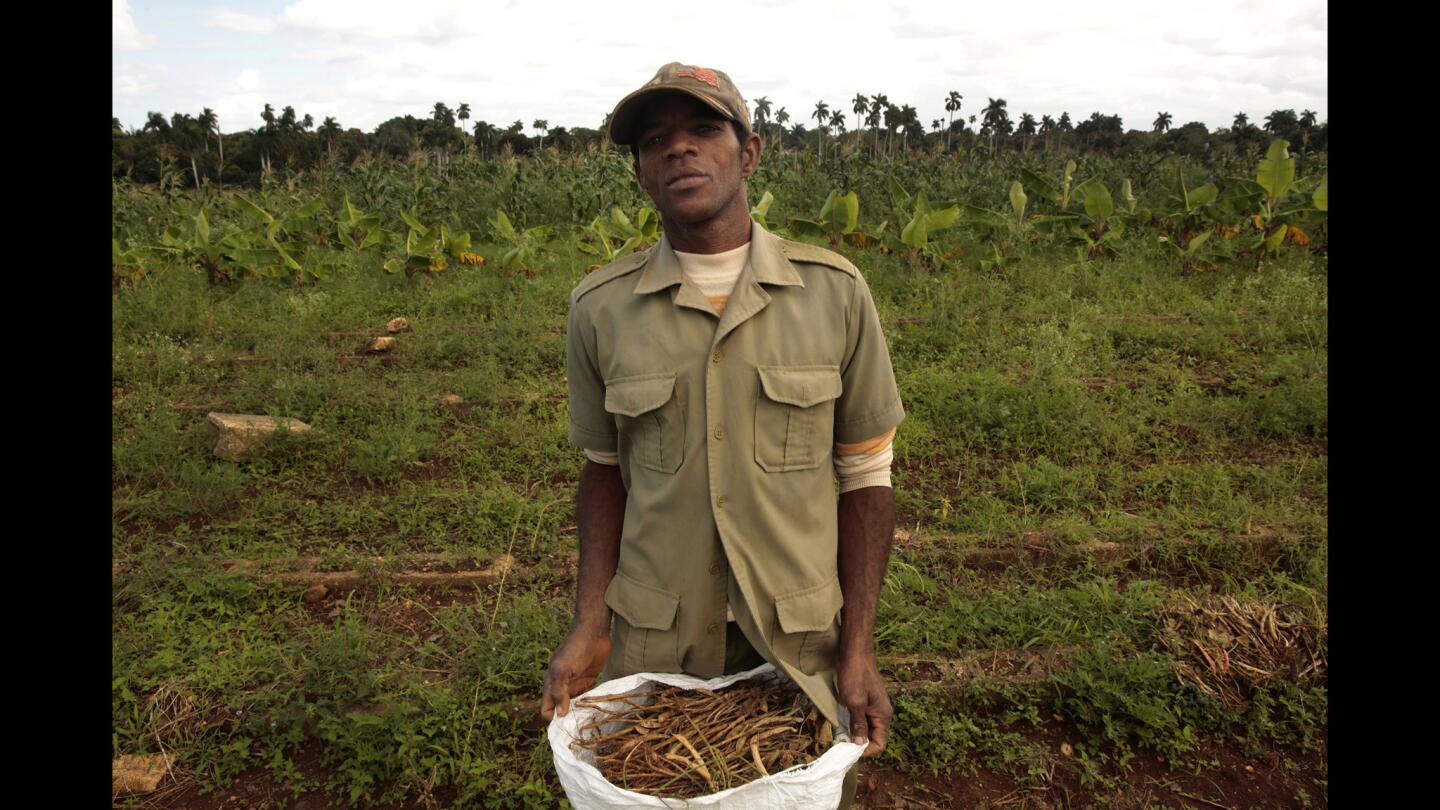
Cabrerra Frior, 38, works on a cooperative farm, where 50% of the food is sold to the government. He earns about $40 a month. Most of the farmwork in Cuba is done by hand, including picking beans. (Carolyn Cole / Los Angeles Times)
Advertisement
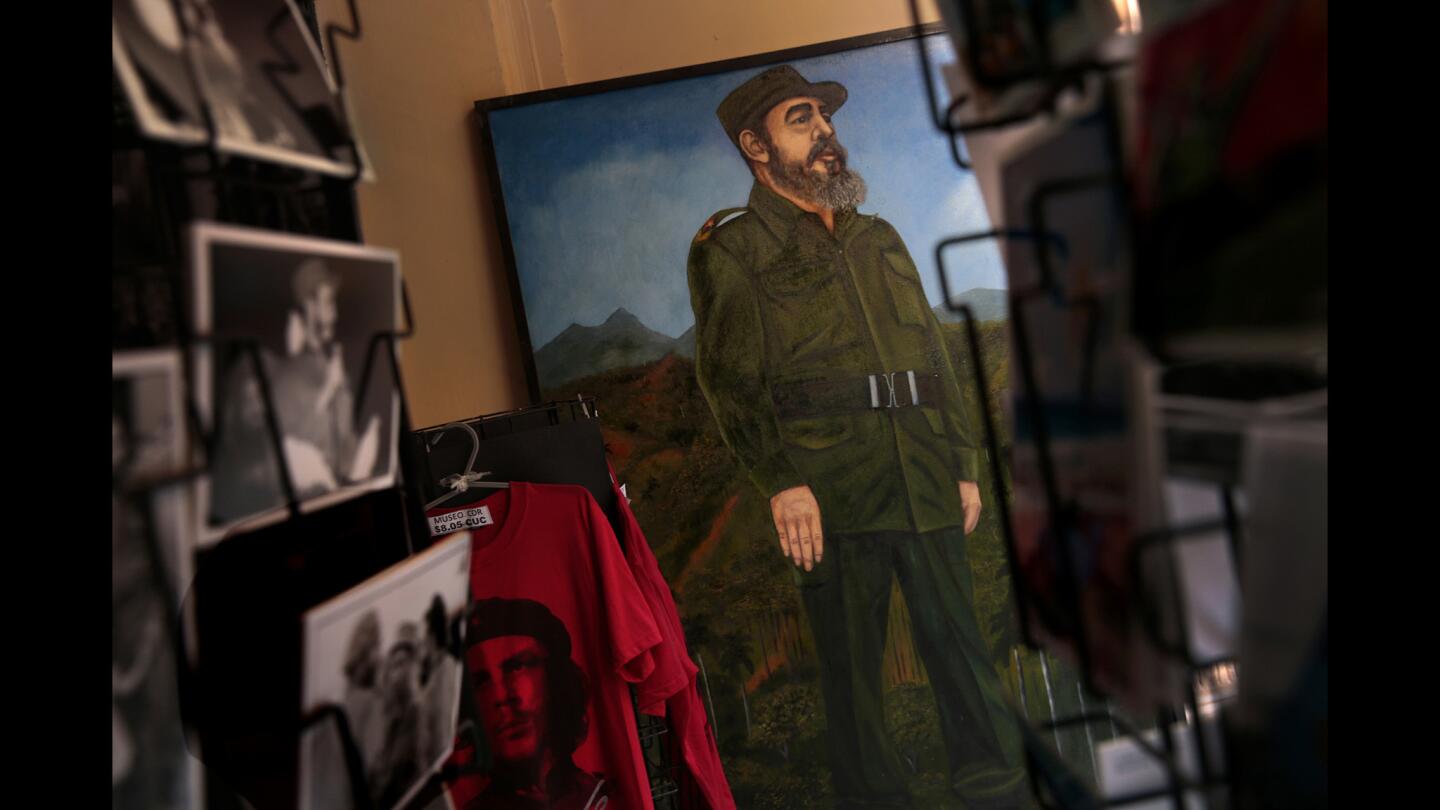
Fidel Castro, former leader of Cuba, has not been seen in public for months amid rumors of failing health. His brother, Raul, is now in charge. In 2013, Miguel Diaz-Canel was named first vice president, the most concrete signal that a leadership change could be on the horizon in Cuba. (Carolyn Cole / Los Angeles Times)
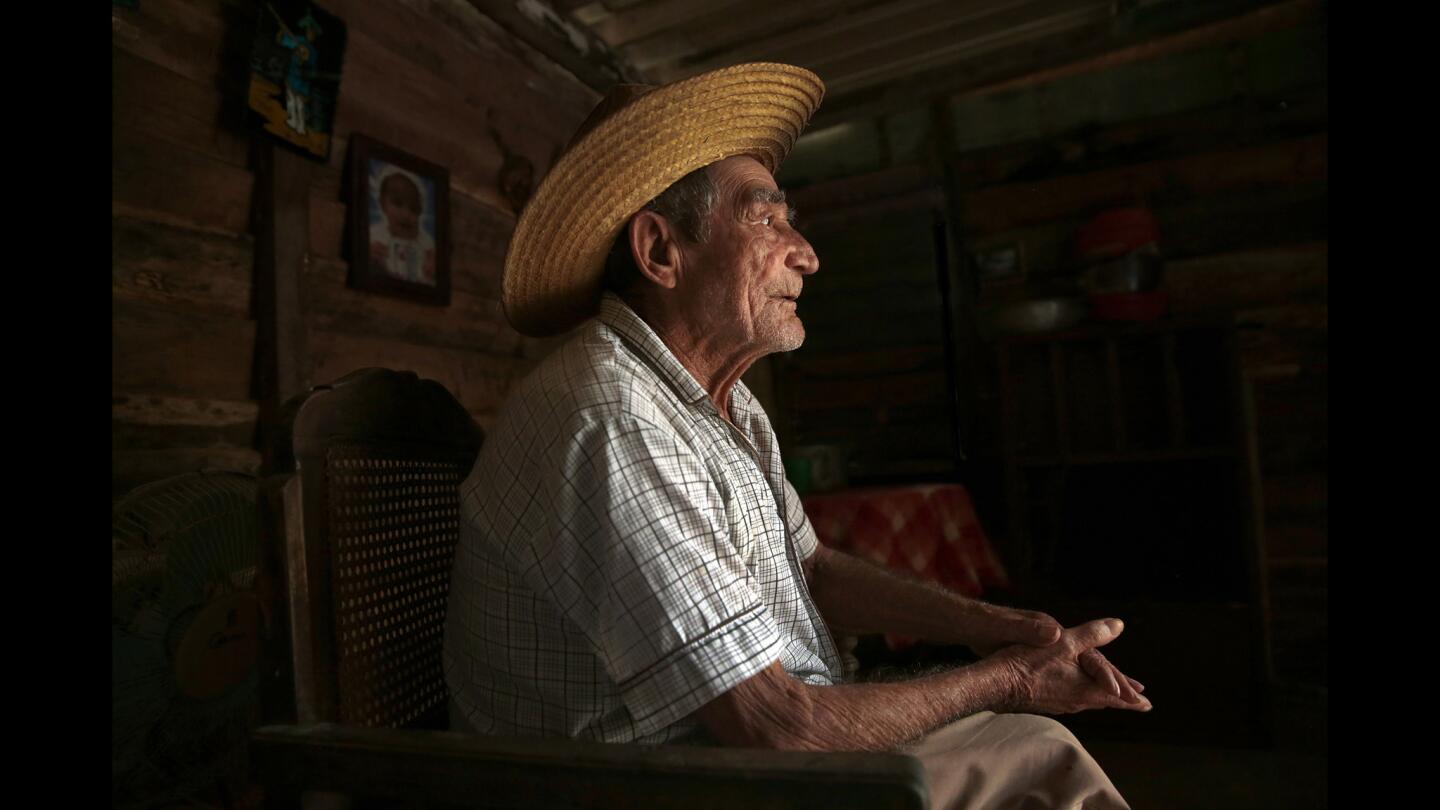
At 83, Jose Hernandez is the same age as Raul Castro, who continues to lead Cuba. Hernandez worked as a farm laborer his whole life and now lives in the town of Mariel. Hernandez was in his mid-twenties when the Cuban Revolution took place in the 1950s. (Carolyn Cole / Los Angeles Times)
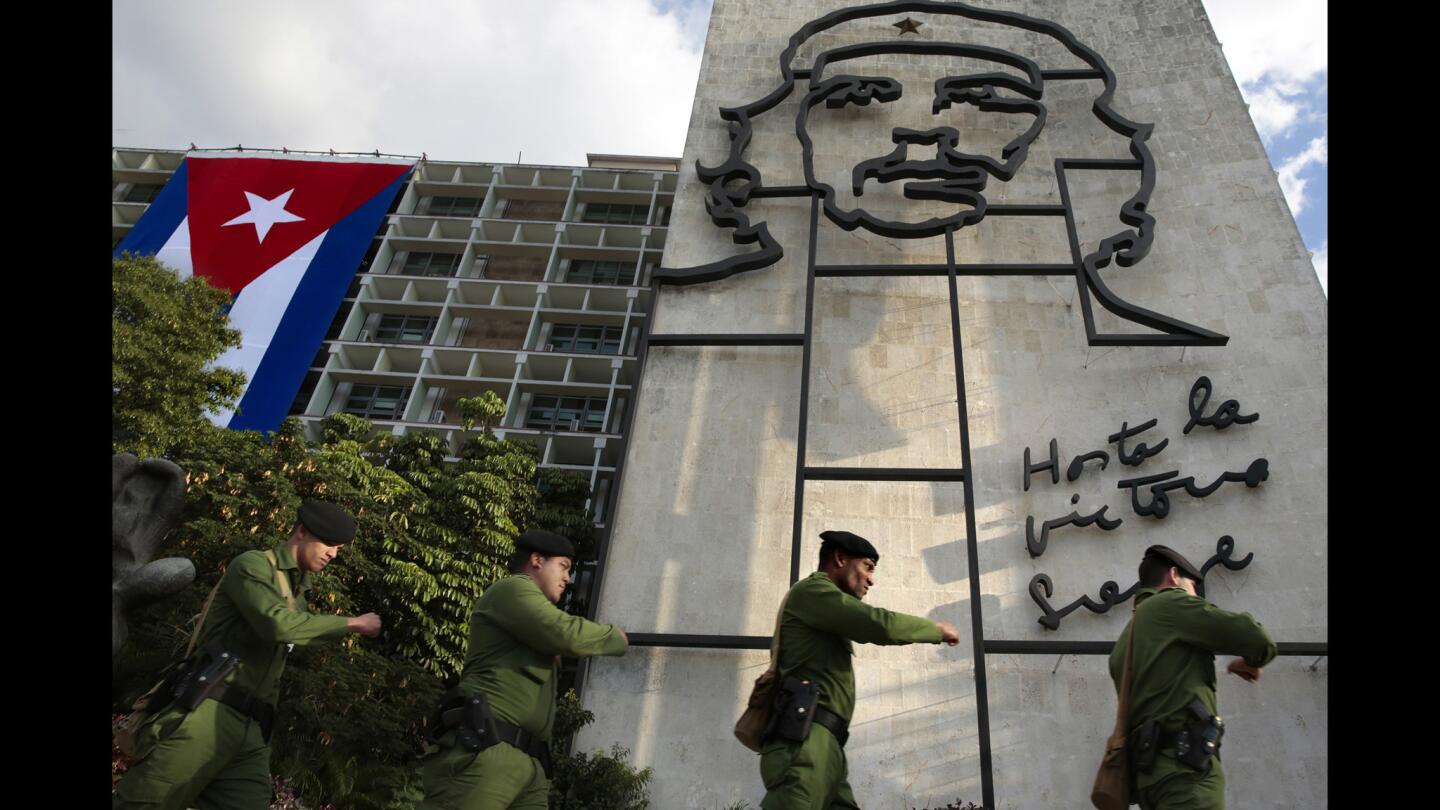
A group of Cuban soldiers march in memory of Cuban national hero Jose Marti in Havana on Marti’s birthday. Jose Marti fought for Cuban independence from Spain. (Carolyn Cole / Los Angeles Times)
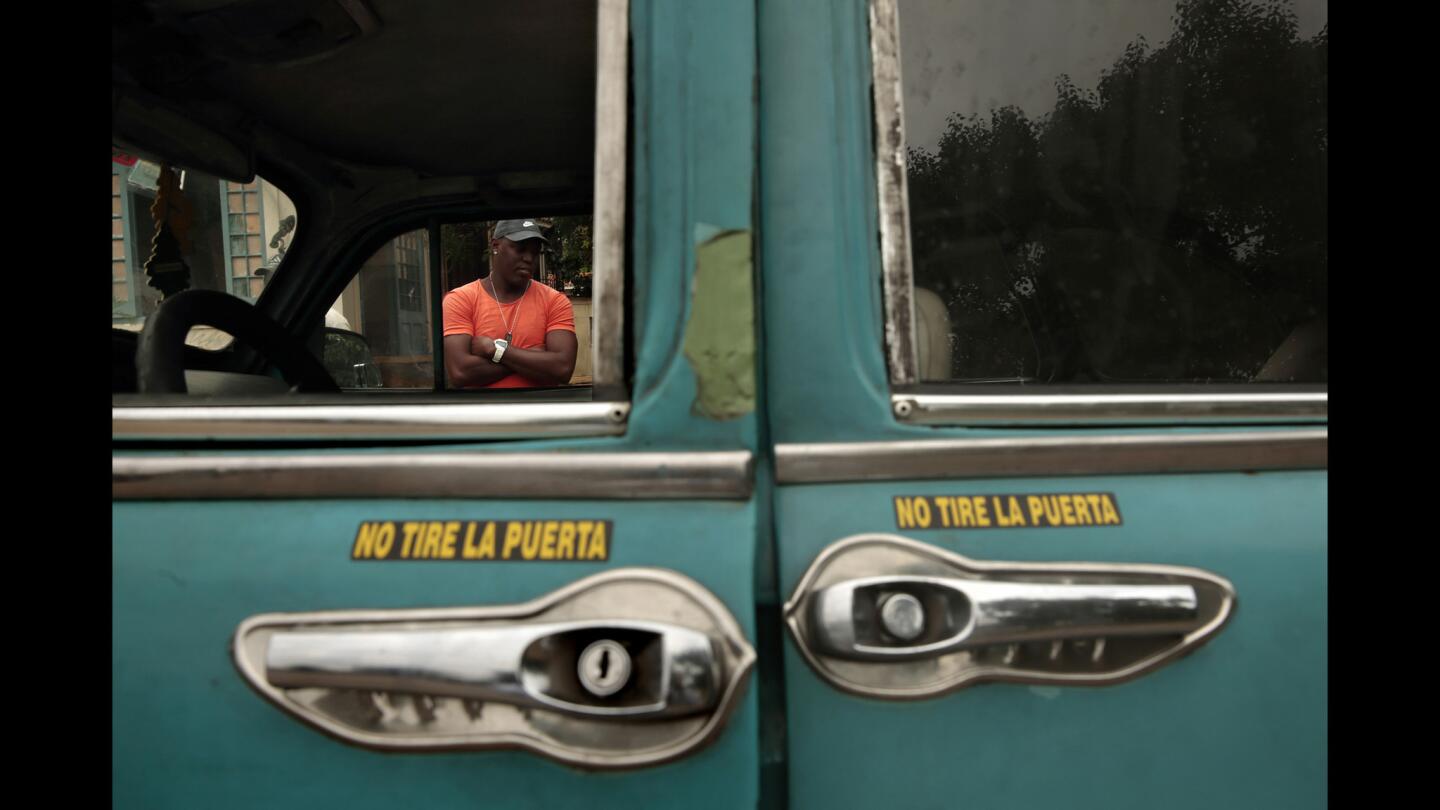
“Don’t slam the door,” is written in Spanish on many old car doors in Havana, where spare parts for cars from the 1950s are hard to come by. (Carolyn Cole / Los Angeles Times)
Advertisement
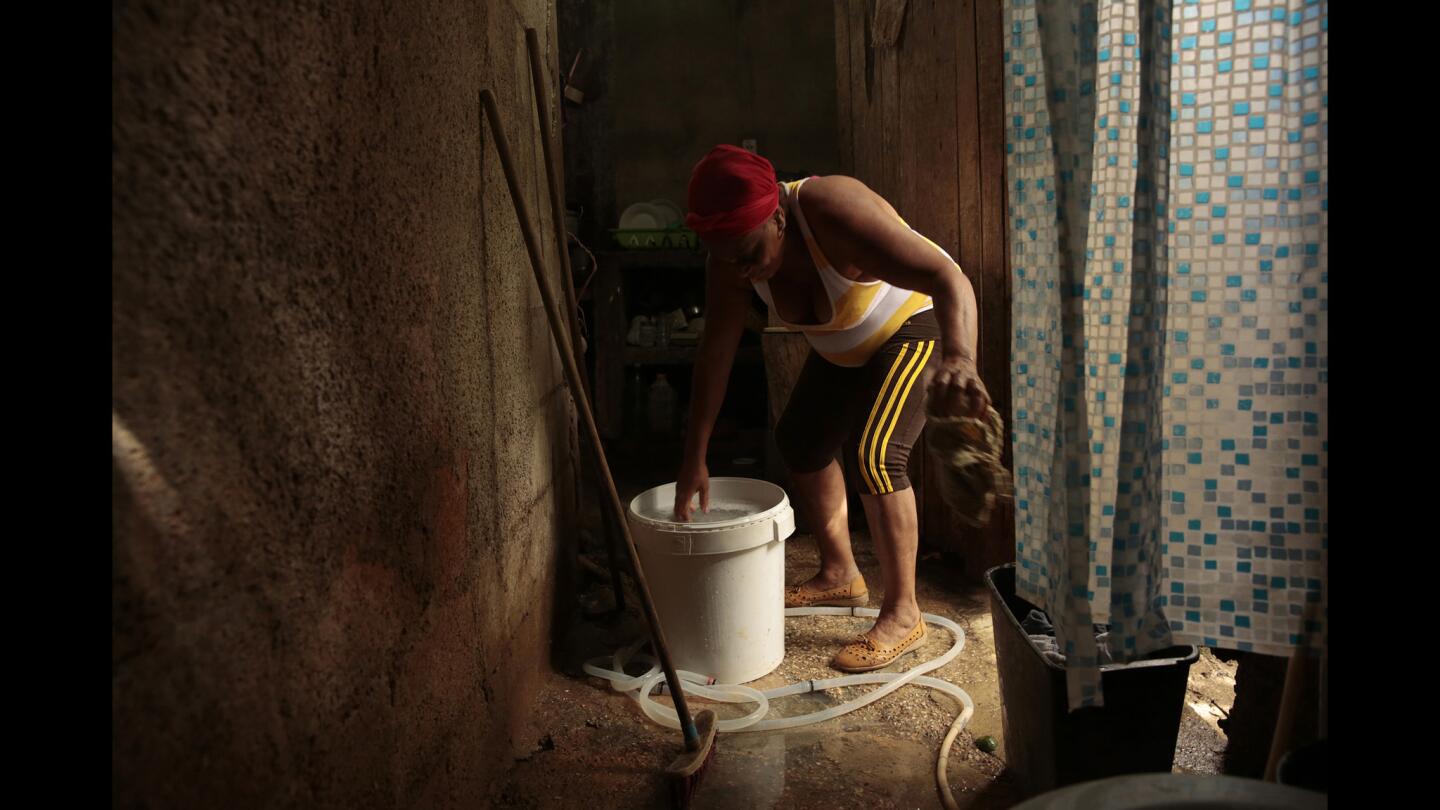
Lady Torres, 58, washes clothes in a bucket at her home in Havana. Although the family has a small washing machine, all of the clothes have to be hand-wrung dry before being hung outside to dry. (Carolyn Cole / Los Angeles Times)
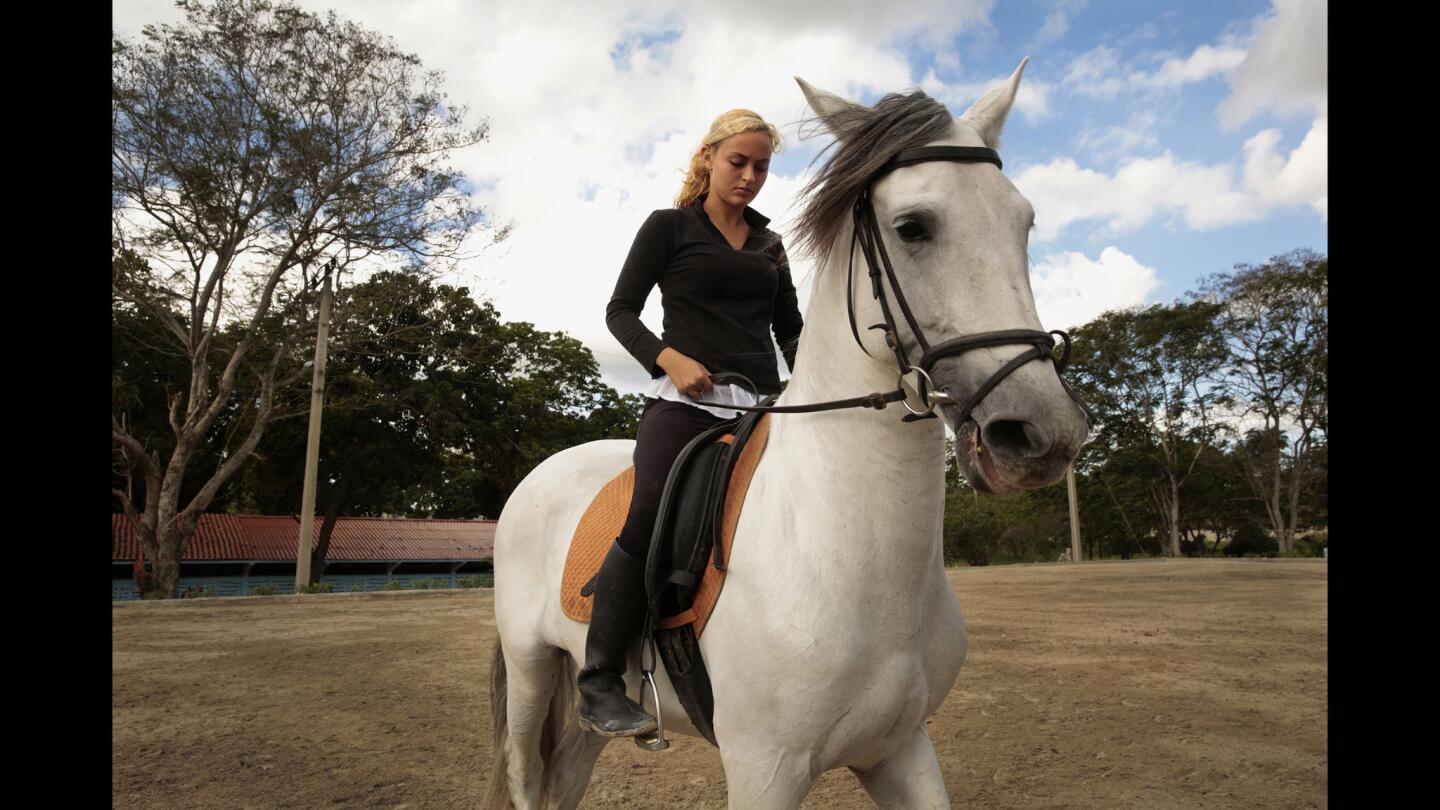
Rosio Jimenez, 16, practices her riding skills at the National Equestrian School in Havana. Her family pays about $50 for her to attend the riding school, which is more than many Cubans make in a month. (Carolyn Cole / Los Angeles Times)
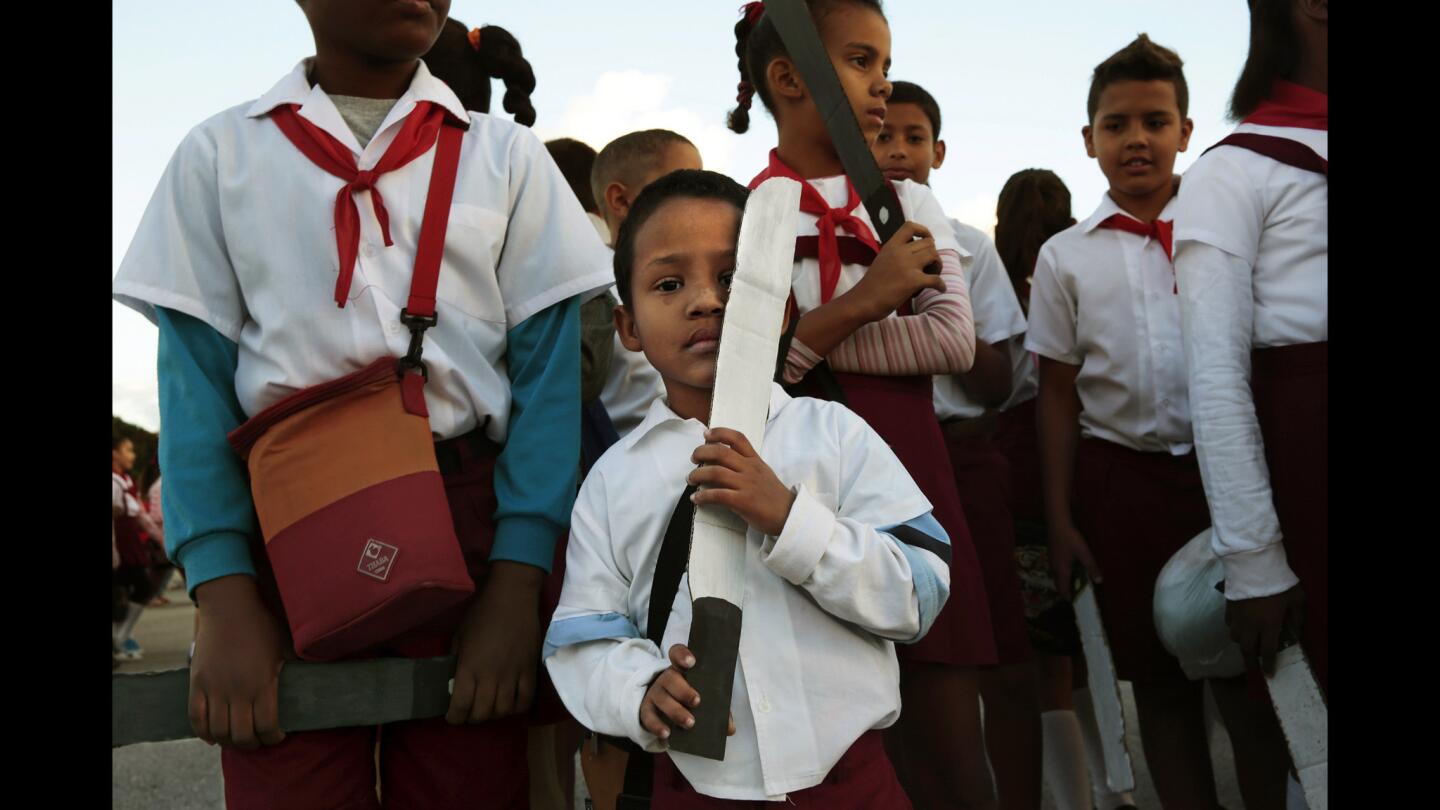
Four-year-old Namir Rodrigo Ruiz Gomez holds a cardboard machete at a ceremony honoring national hero Jose Marti. Ceremonies are held throughout Havana on Marti’s Jan. 28 birthday. (Carolyn Cole / Los Angeles Times)
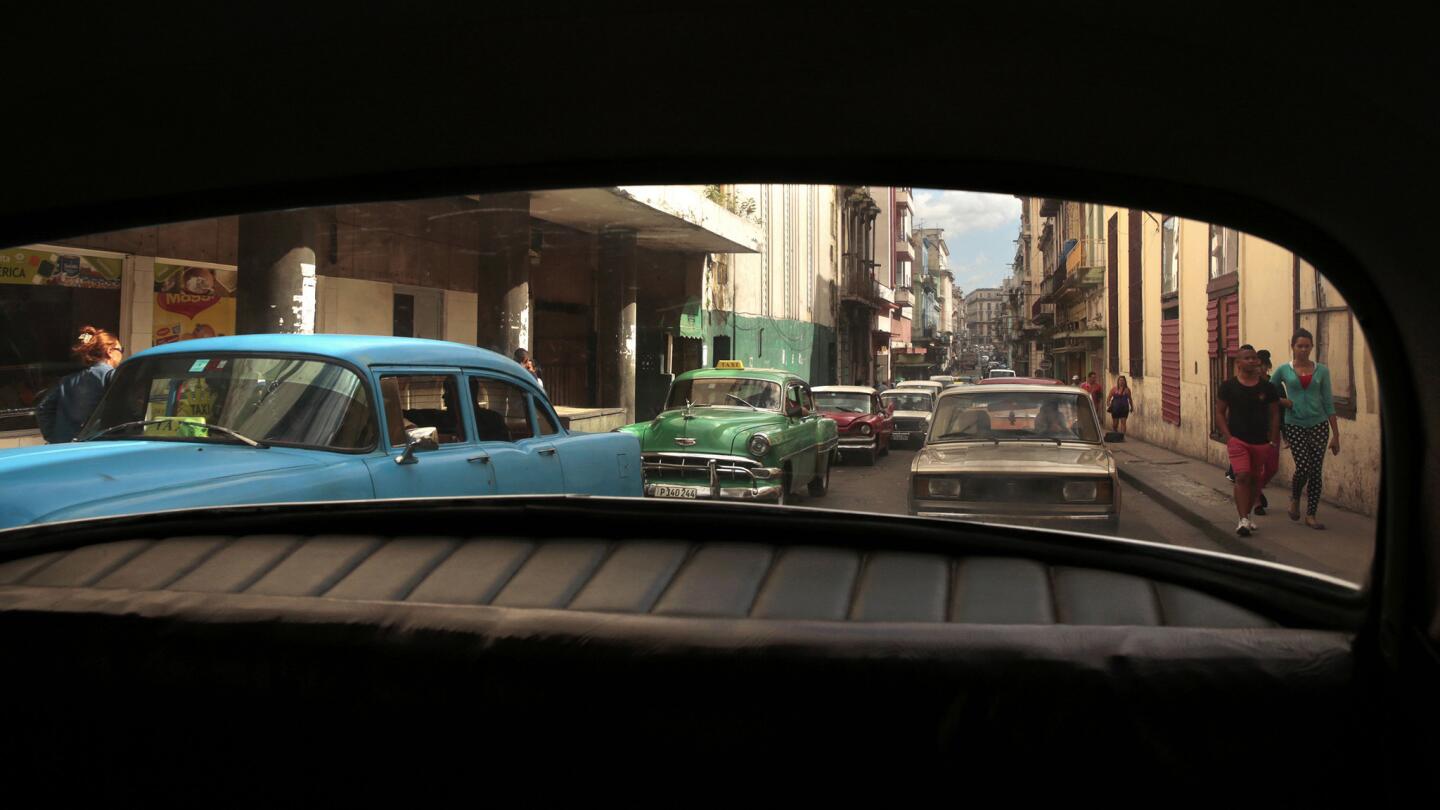
Many old American cars are used as shared taxis in Havana, with each person paying a small amount. An American car from the 1950s can cost $20,000 to $30,000. (Carolyn Cole / Los Angeles Times)
Advertisement
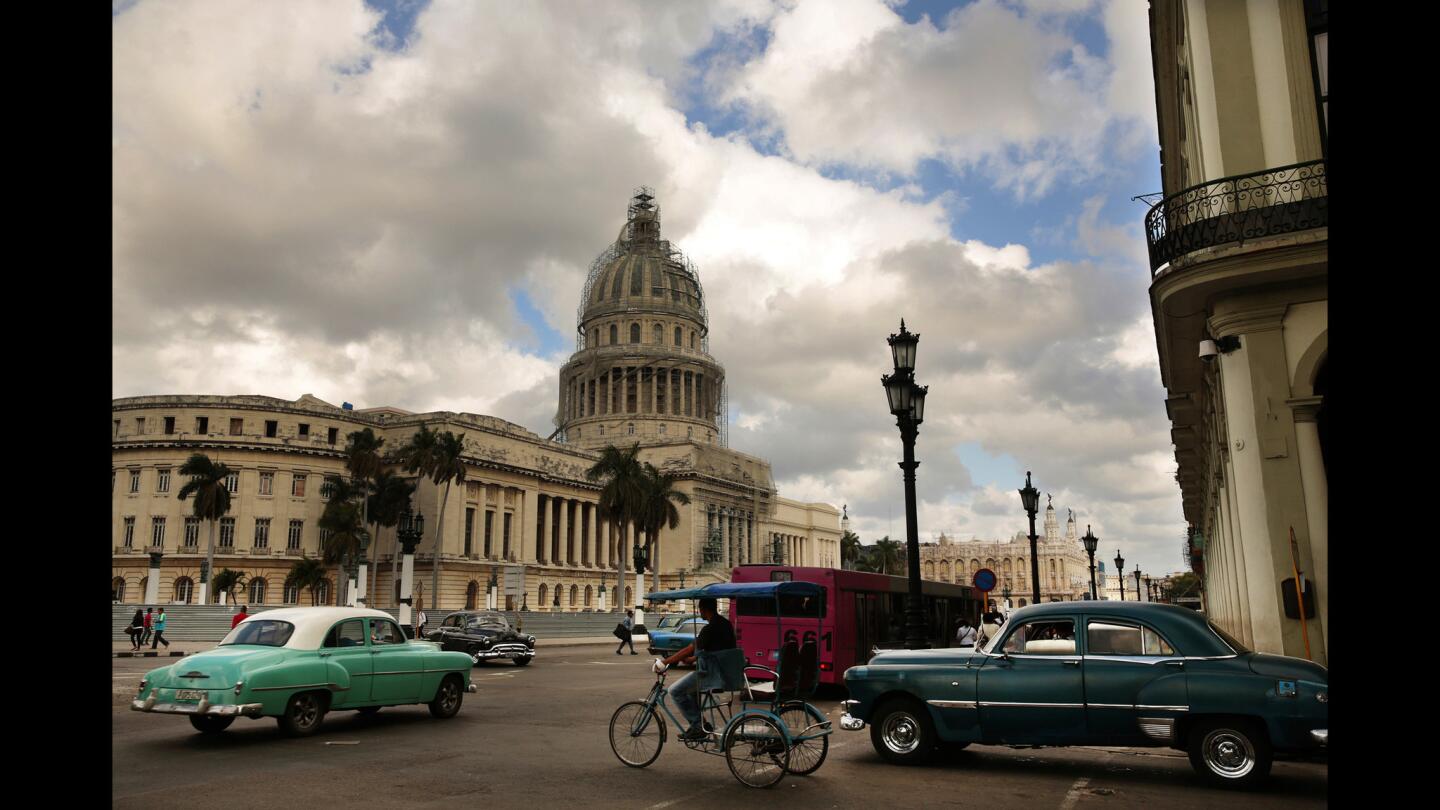
Reconstruction is underway at the Capitolio National in downtown Havana. Most of the cars are used as shared taxis around the city, with each rider paying a small amount. (Carolyn Cole / Los Angeles Times)
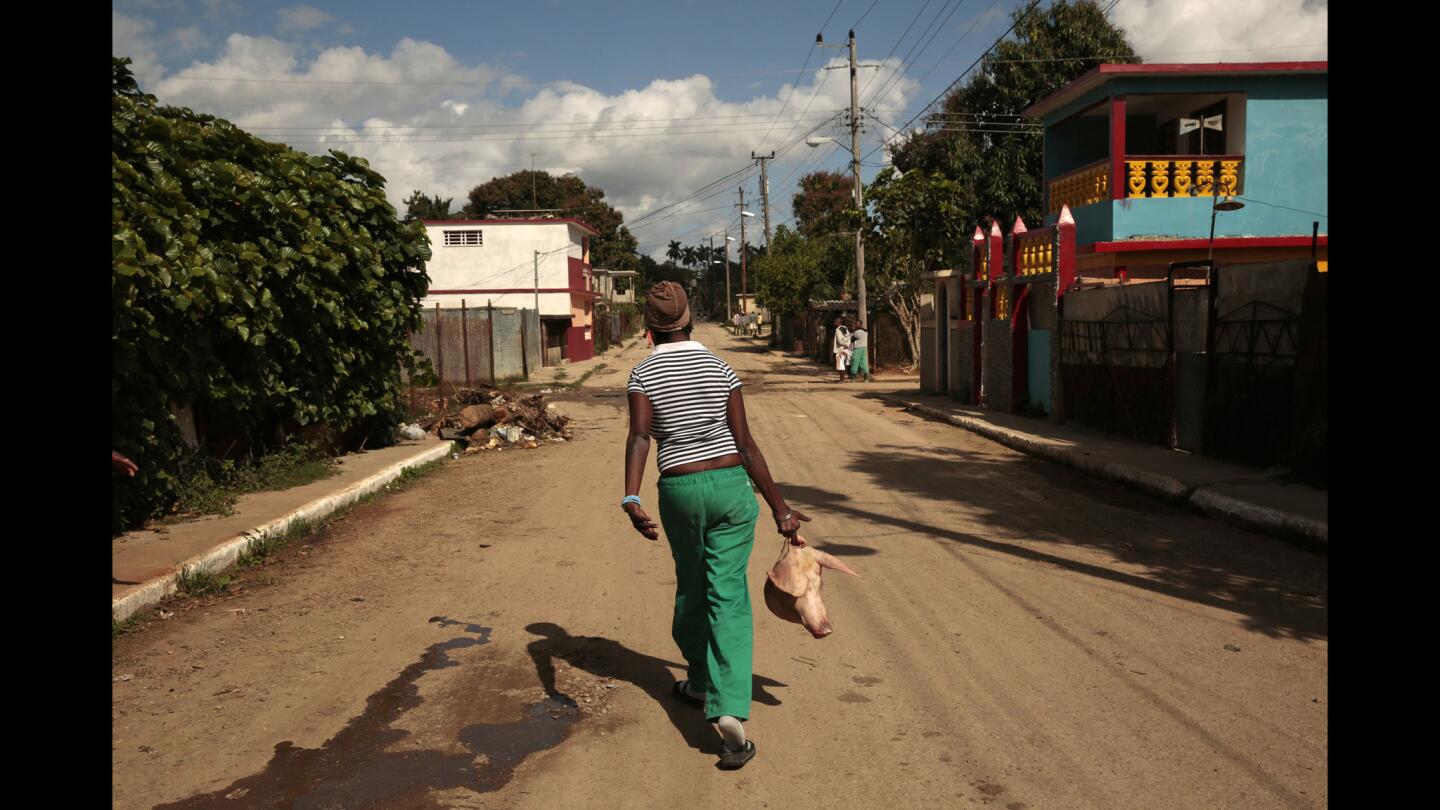
A woman carrys the head of a pig she bought from an outdoor butcher in Havana. Chicken, beef, pork and fish are all relatively expensive and not provided in monthly government rations. Many of the streets of rural Havana are also not paved. (Carolyn Cole / Los Angeles Times)
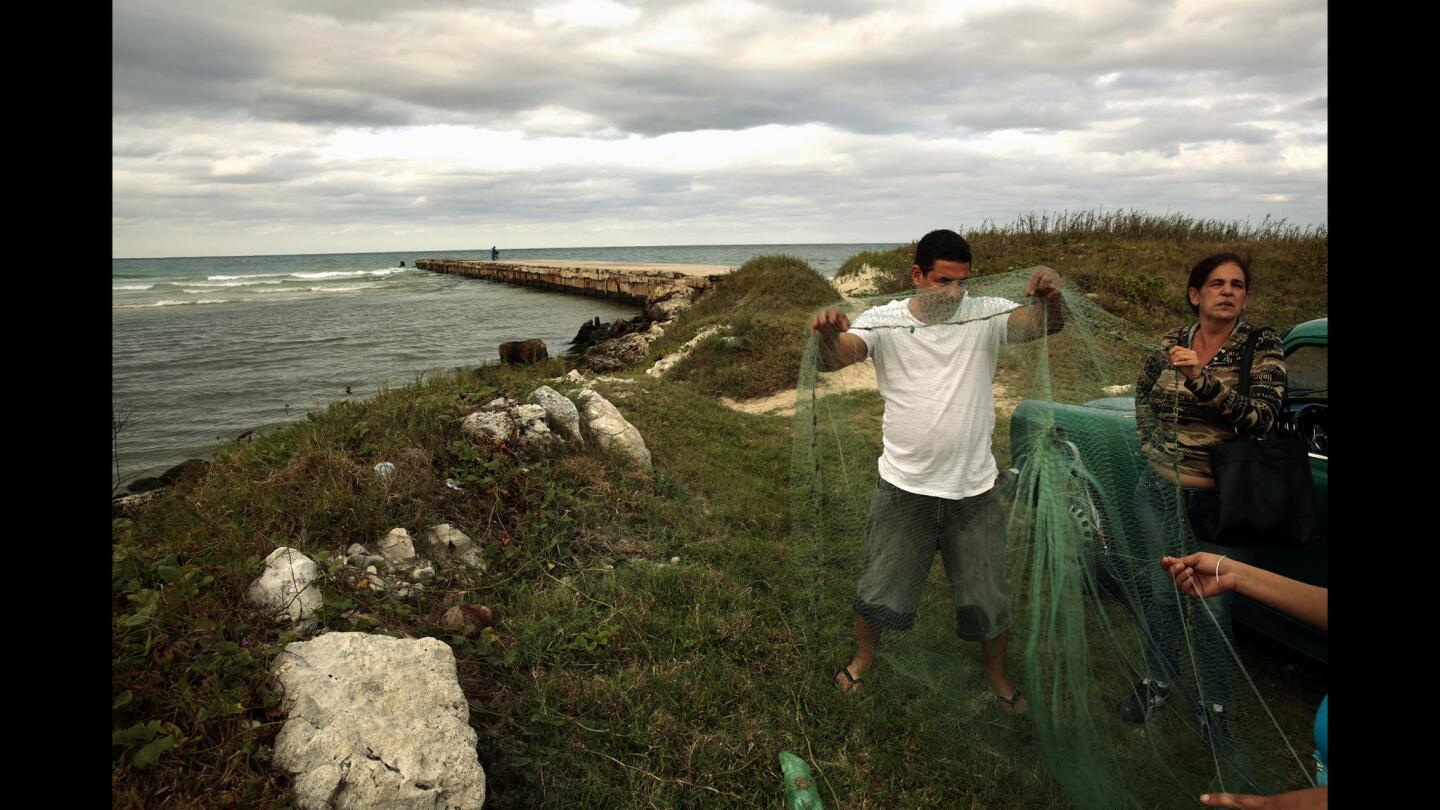
A family fishes using nets along a beach in Guanabo, Cuba. Many families view fishing as a way to supplement their diets. Fish, meat and chicken are relatively expensive in Cuba and not part of the free food rations distributed by the government. (Carolyn Cole / Los Angeles Times)
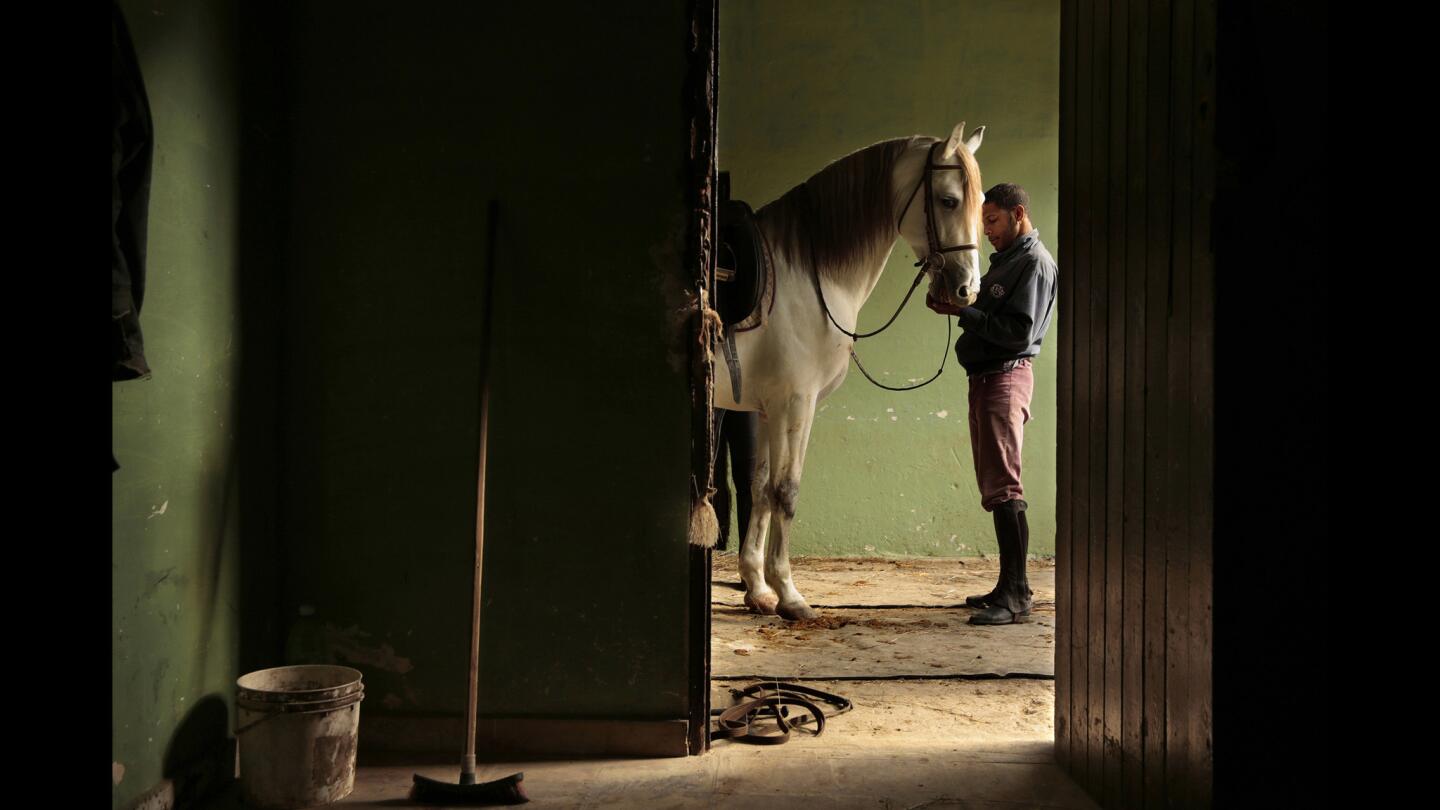
Rafael Castro, 24, works at the National Equestrian Center in Havana. He takes care of the government horses, including 3-year-old Dario. It is a good job and pays about $80 a month. (Carolyn Cole / Los Angeles Times)
Advertisement
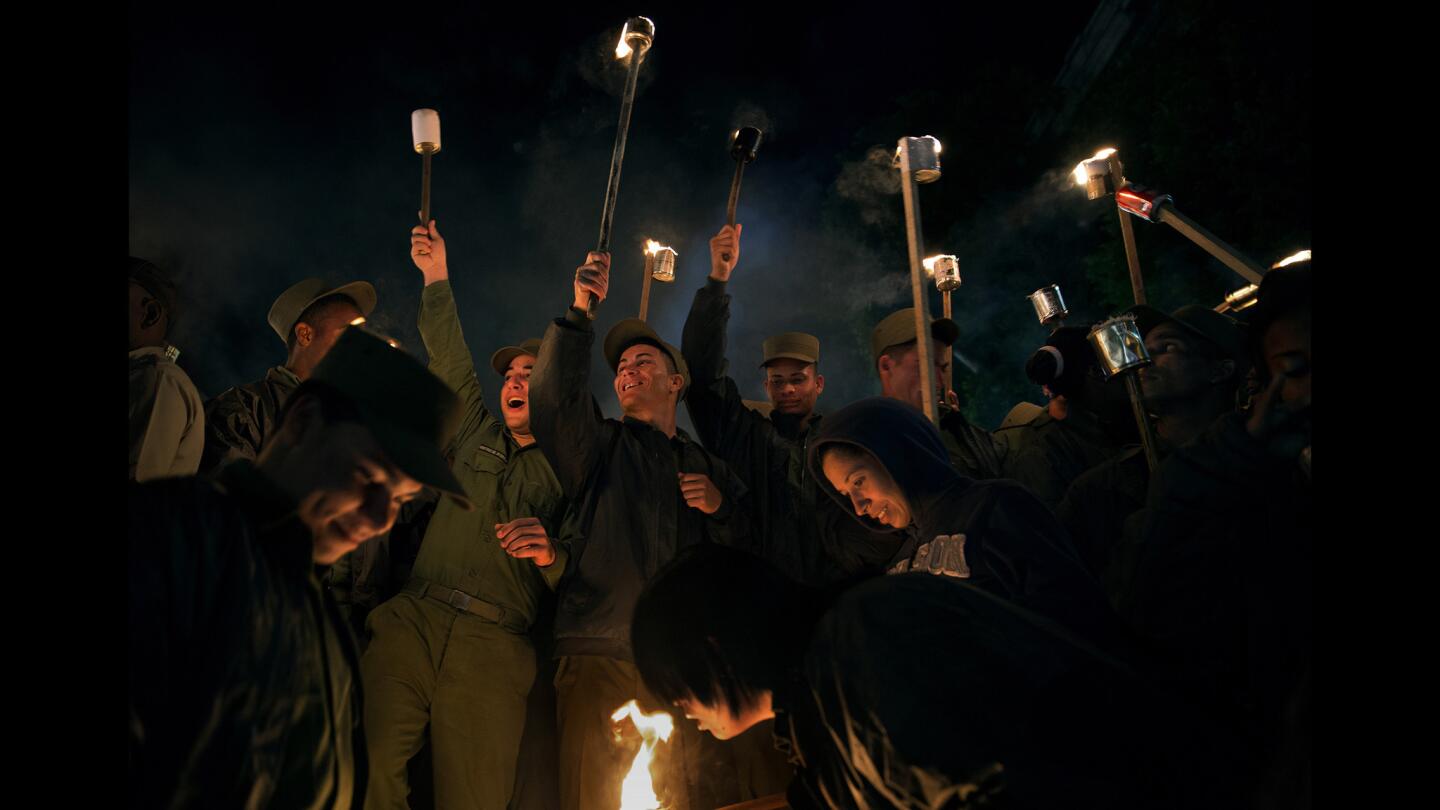
A group of Cuban soldiers raise their torches during a march in honor of Cuban national hero Jose Marti. On Marti’s Jan. 28 birthday, thousands of Cubans march through Havana in what is called the March of the Torches. (Carolyn Cole / Los Angeles Times)



